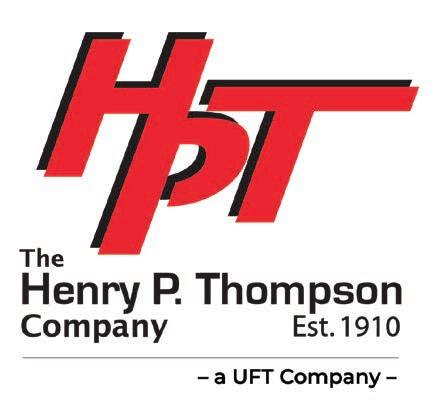


























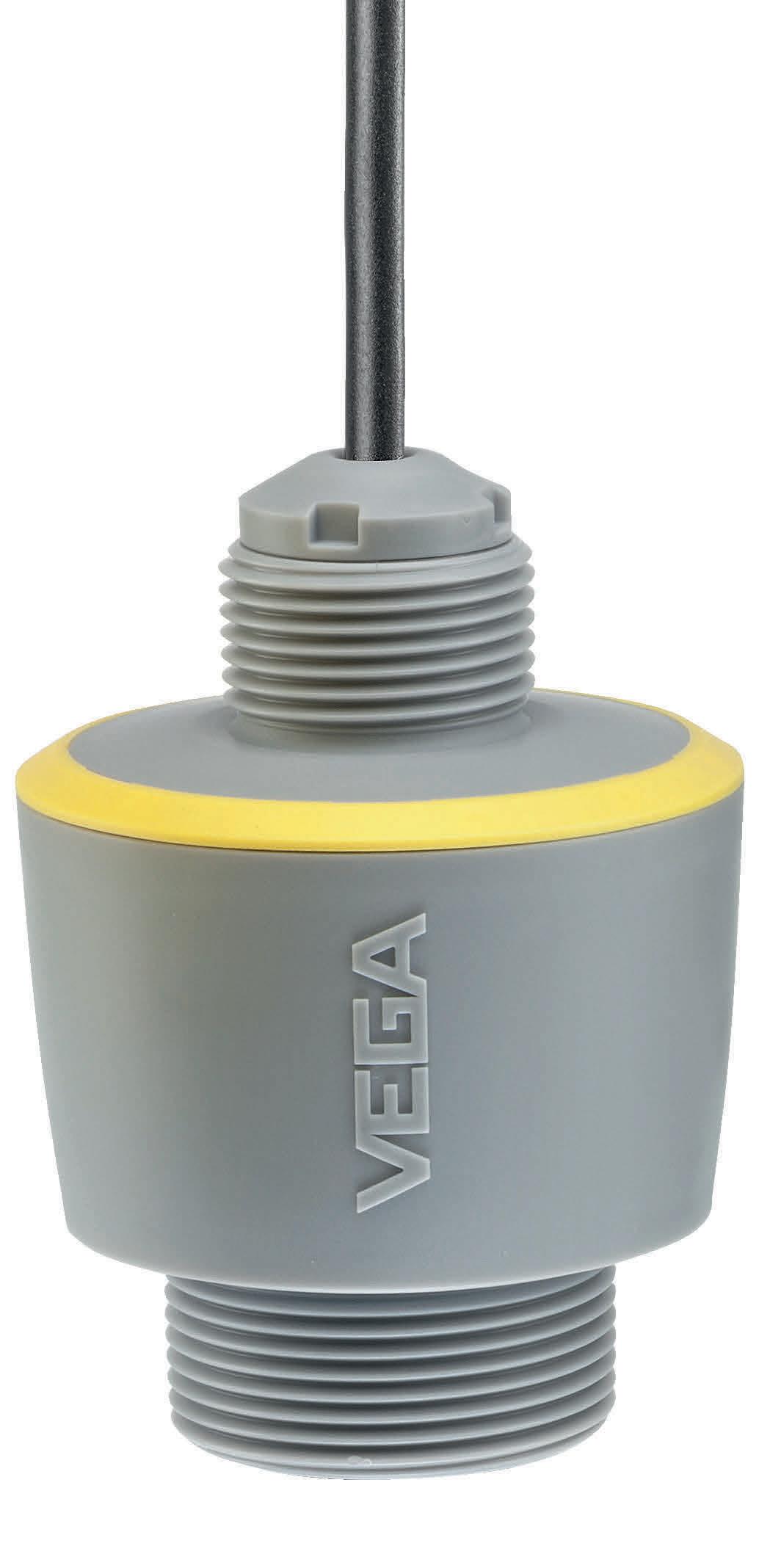
80 GHz level sensor with fixed cable connection (IP68)
- Accuracy and reliability meet affordability
- Easy Bluetooth setup via the VEGA Tools app for smart devices
- Optional remote display available
All advantages of the radar technology: $795
www.vega.com/vegapuls

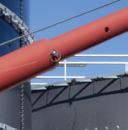
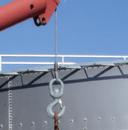




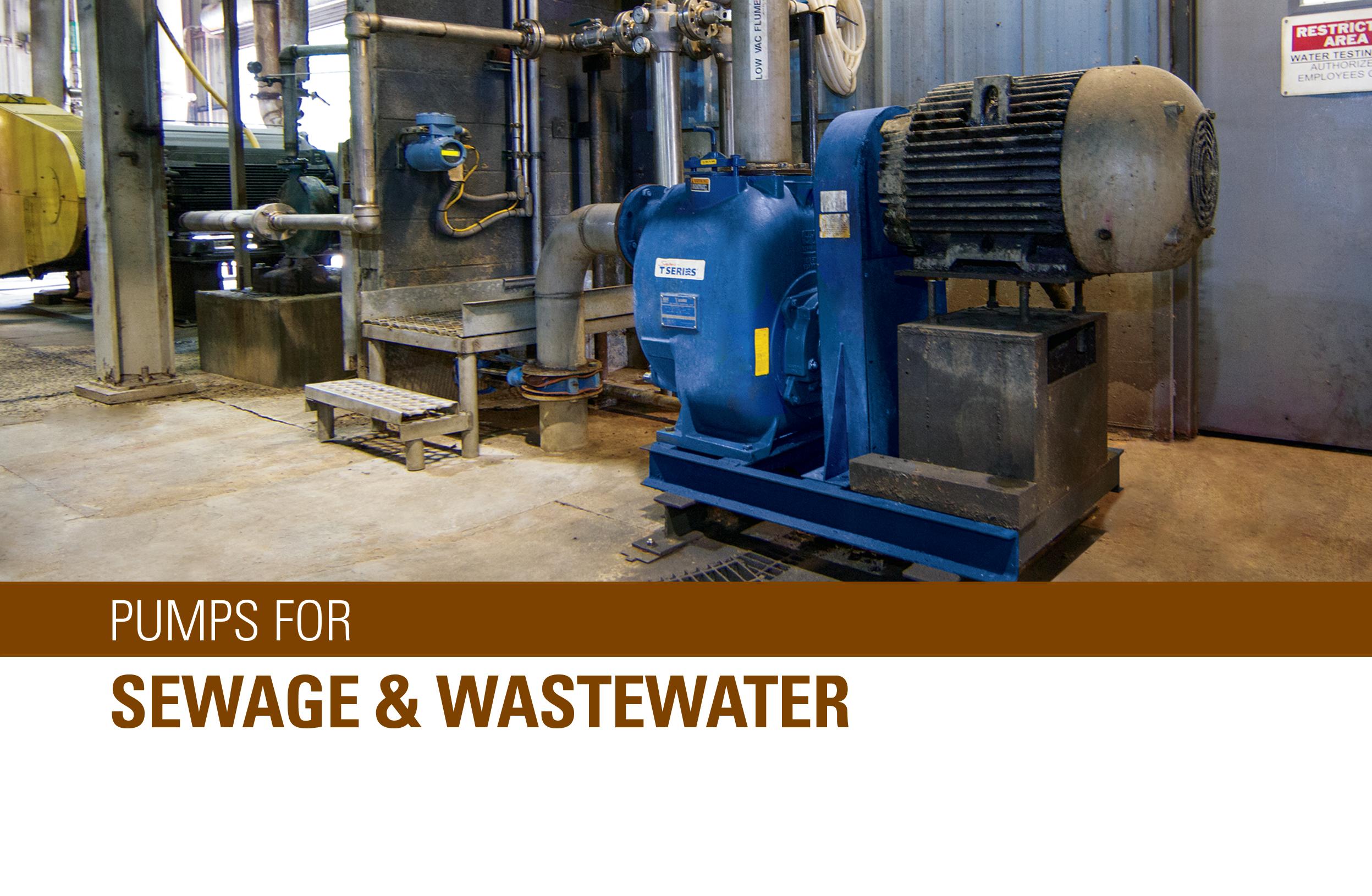





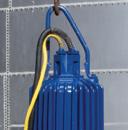






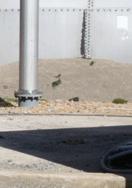
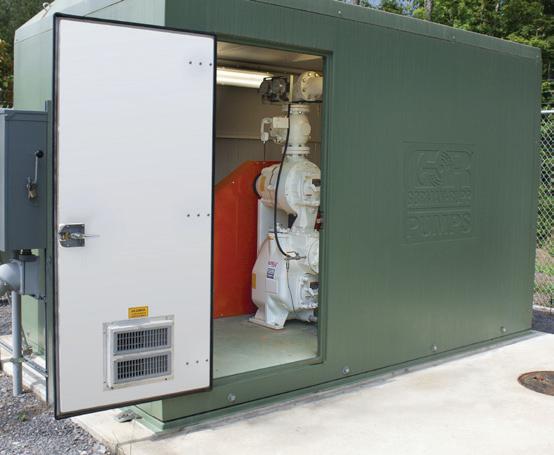

Gorman-Rupp manufactures a complete line of above- and below-ground lift stations designed speci cally for sewage. Our lift stations can be used in new wastewater collection systems for community expansion or to retro t an existing pump system.
We set the industry standard in solids-handling, emergency back-up and bypass engine-driven pumps for all your wastewater needs. Every Gorman-Rupp pump is factory-designed and tested for long lasting, trouble free use. All Gorman-Rupp pumps are backed by the best distributor network and parts inventory in the industry. Contact your local Gorman-Rupp distributor today for more information on our line of sewage-handling products.

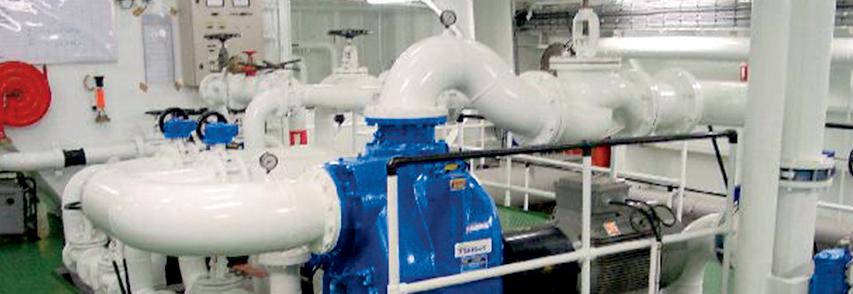

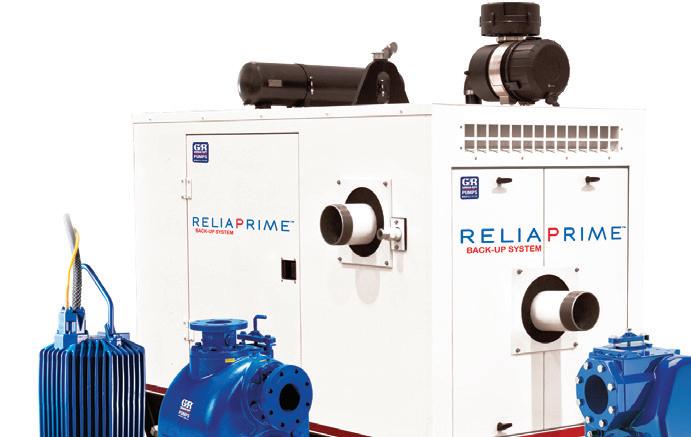




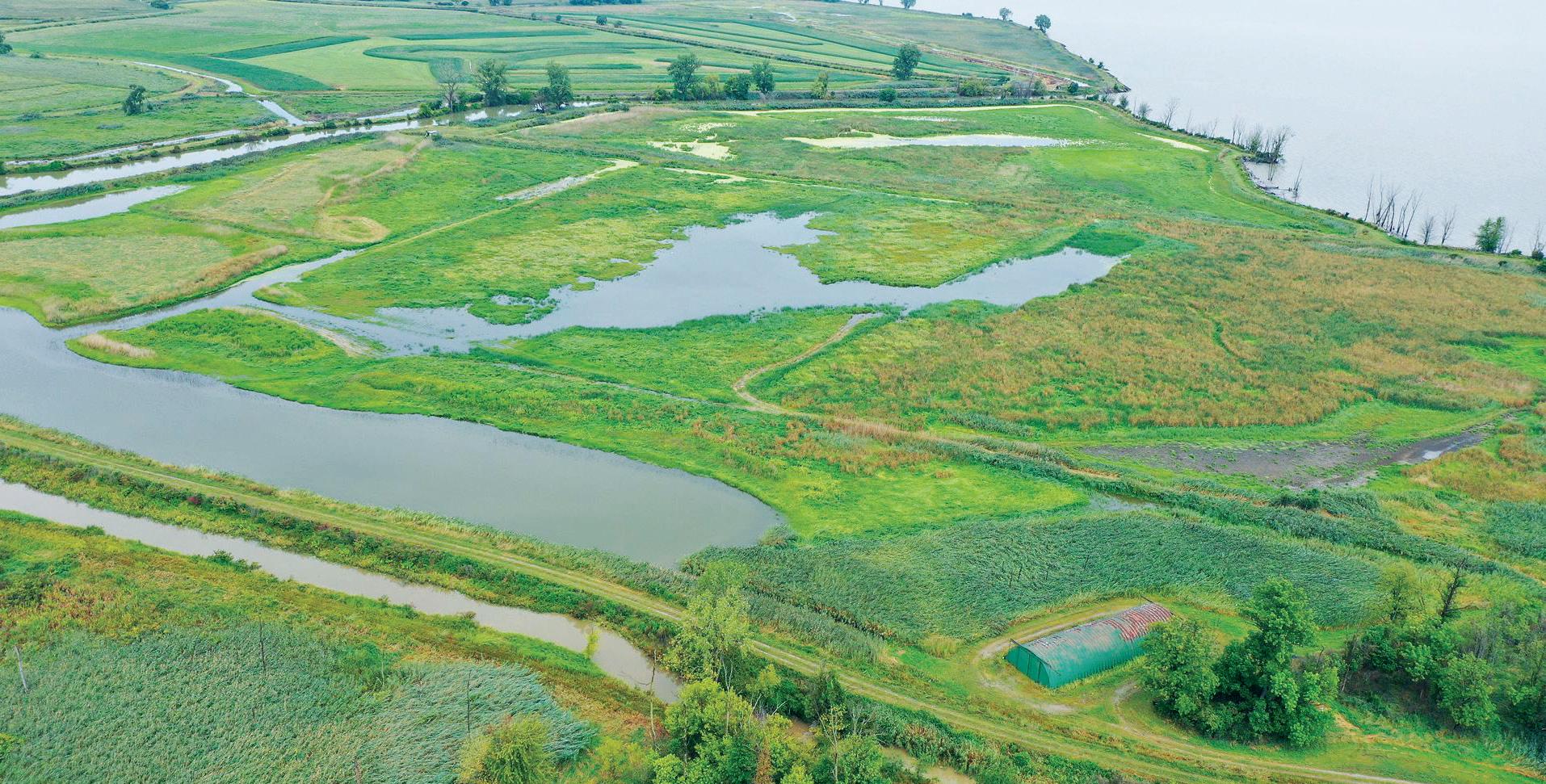


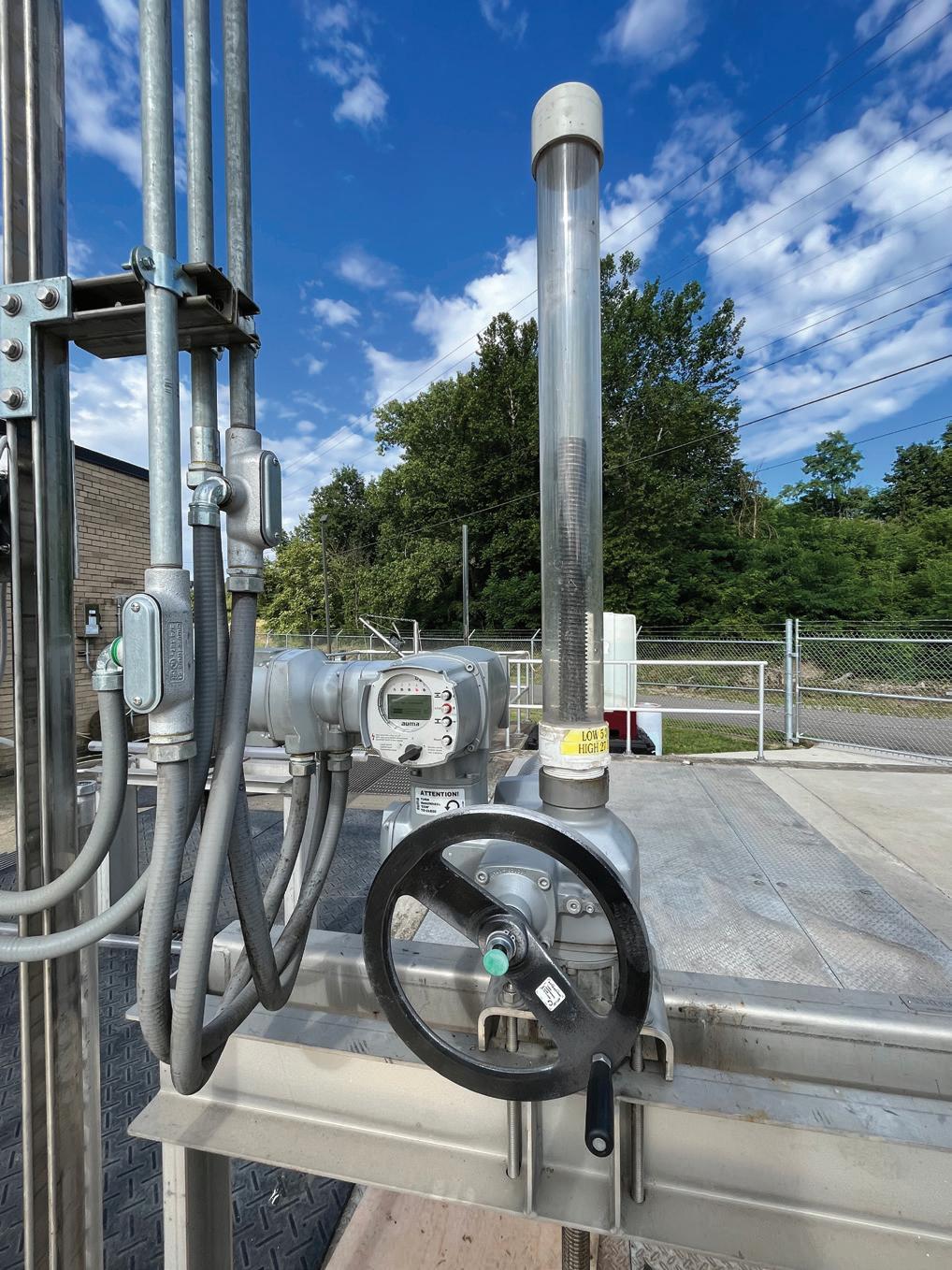

▪ High torque and emergency shutdown
▪ Modular design for ease of maintenance
▪ Integration with all conventional control systems
▪ Variable speed for high precision control
▪ Worldwide service
▪ Zero emissions
AUMA offers a comprehensive actuator portfolio of reliable and long-lasting electric actuators for industrial valve automation in all market segments. Discover our solutions for the water industry | www.auma.com Mailbox@auma-usa.com

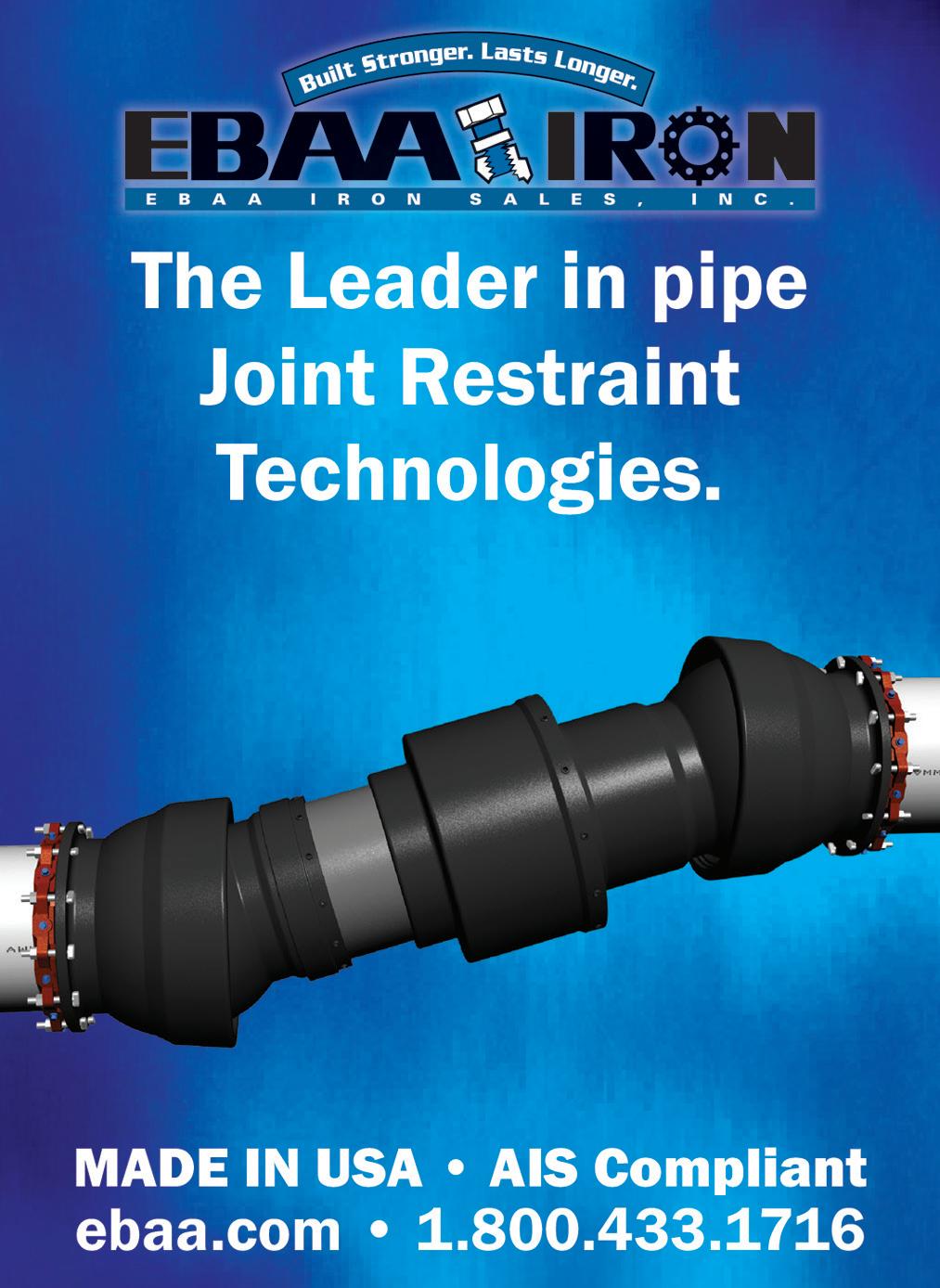
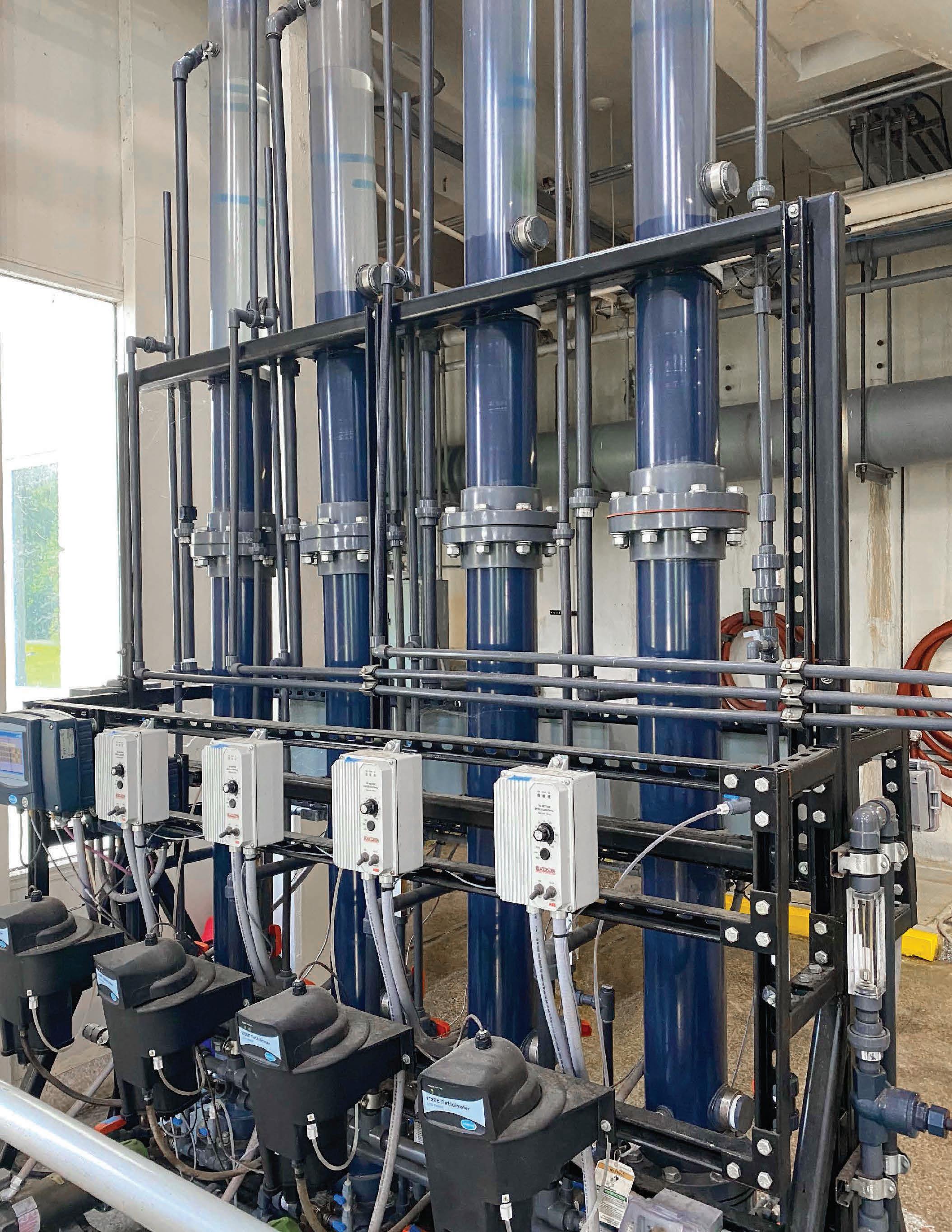
Spring has finally arrived. Outside we see new blooms on vegetation that have stood bare during winter. Birdsongs have returned, filling the air with a lively soundtrack to the serene spring mornings. Good riddance to winter, I say! Winter is cold and bleak, yet we’re ingrained to reflect on the prior year and set priorities for the next year. Why? Are you in the proper mindset to see the best you? And if you aren’t, should you be providing feedback for others or setting plans for the next fiscal year?
Let’s look at it a different way. Are you excited to leave your house on a 15-degree morning to walk your dog, shovel your walk or scrape your car? How long do you go without seeing your neighbors? We tend to fall into a winter groove that encourages bouts of short tempers, exhaustion and frustration. Winter can be downright dreadful. So why do we put so much emphasis on our people at that time of year?
Our people deserve better. I’m not going to change my organization’s fiscal year and I’m not going to change the employee review cycle. You won’t either and that’s okay. It’s not broken so it doesn’t need to be fixed. But can we improve? Can we use this time of year, the most inspirational time of year, to improve upon ourselves and empower others to do the same? Control what you can control. You can embrace nature’s freshness and energy and bring it to the workplace. You can take a co-worker out to coffee on an outdoor patio, or have a meeting in park. You can celebrate your co-workers both internal

and external. You can take time to check-in with yourself and review the priorities set months prior. Accept that you may not be on track and accept that you might want to adjust a priority that was developed during a bleak time of year. Every spring, I’m inspired to dust off my priorities and set at least one new priority on a different review period, spring-to-spring rather than winter-to-winter. I’m inspired to reach out and help others by encouraging, coaching, complimenting and supporting. I let the new blooms, birdsongs and serene mornings be the fuel for my inspiration and I encourage you to do the same. Why do I do it?
Water is an industry and a business. We are all dedicated to the world’s most vital resource and through water we all work together to ensure that our people are educated and trained to properly respond to the industry’s challenges. Our people are water, and water has a culture. Without a positive culture, we will struggle to have people, and without people we won’t have water. So, let’s be honest… have you struggled to find the right people? Have you struggled to retain people? How is your personal culture? How is your network’s culture? I’m inspired this spring to dust off my winter mindset and take positive actions to create a positive culture. I hope that you can also be inspired to encourage, coach, compliment and support the people in your water network; it’s my water network too. So, this spring, let us be inspired to bring our best selves to water so our people are inspired to do the same. Together we’ll sustain water to 2050 and far beyond. It starts with us. Are you ready?
We are all dedicated to the world’s most vital resource and through water we all work together to ensure that our people are educated and trained to properly respond to the industry’s challenges.
Waterfront is published three times a year and distributed to all Ohio Section members. Highlights include Association news and updates, regulatory updates from the Ohio EPA, timely technical articles, and so much more.
Currently accepting article reservations for:
• 2024 Summer and Fall, and 2025 Spring
Deadline for technical content:
Summer issues: May 17
Fall issues: September 27
Article Requirements/Topics
Length:
• Maximum of 3,000 words or 6 pages including graphics, whichever is less
Graphics:
• Multiple graphics are encouraged
• Hi-res 300x300 dpi or greater

Format:
• Articles should be formatted in MS Word and include graphic and photo locations. All graphics should be submitted as separate files, in the highest resolution possible.
• The newsletter committee will review the articles and approve the content. Revisions may be requested.
Topics:
• Utility Projects
• Research
• Industry Events
• Industry News
• Technology
• Innovative Utility Member Solutions (think Opflow Gimmick & Gadgets)
How to submit articles:
Send a request with synopsis of the article to oawwa@assnoffices.com
Technical articles should be submitted in a Word document file meeting the above criteria to oawwa@assnoffices.com.
Chair
Vice-Chair
At-Large Trustee
At-Large Trustee
NE District Trustee
NW District Trustee
SE District Trustee
SW District Trustee
Treasurer
Secretary
Assistant Treasurer (non-voting)
Past Chair
AWWA Director
Mike Giangiordano michael.giangiordano@jacobs.com
Luke Murry lmurry@gpdgroup.com
Jennifer Webster jennifer.webster@arcadis.com
Jason Adkins jadkins@indianhill.gov
Denita Bonhart denita_bonhart@clevelandwater.com
Scott Ballenger sjballenger@aquaamerica.com
Tyler York yorkta@bv.com
Lance Livesay lance.livesay@amwater.com
Valerie Copanic vcopanic@warren.org
Glenn Marzluf gmarzluf@delcowater.com
Tim McCann timothy.mccann@aecom.com
Marcus Lehotay marcus.lehotay@fairbornoh.gov
Tyler Converse tyler.converse@cantonohio.gov
NW District Chair
NE District Chair
SE District Chair
SW District Chair
Rob Reeder rreeder@aquaamerica.com
Dave Gilbert david.gilbert@lakewoodoh.net
Charles Moore clmoore@columbus.gov
Joe Bates jbates@ci.xenia.oh.us
Asset Management
Awards
Charitable Outreach
Competitions
Customer Service
Distribution
Diversity
Education
Lake Erie Water Plant
MAC
Membership
Newsletter
Nominating
Ohio WARN
Research
Scholarship
Sourcewater Protection
Technical Program
Technology
Utility Management
Water Utility Council
Young Professionals
Jeff Presler jeff.pesler@woolpert.com
Cliff Shrive cshrive.cincinnati@gmail.com
Alyssa Ramsey alyssa.ramsey@jacobs.com
Jay Cermenaro jcermenaro@aymcdonald.com
Kim Spiert kaspiert@columbus.gov
Sandra Vozar sandra.vozar@lakewoodoh.net
Trish Harrison tricia.harrison@gcww.cincinnati-oh.gov
Steve Heimlich sheimlichalmu@gmail.com
Sam Jacob sjacob@cityofelyria.org
Tony Lococo tony@hlbaker.com
Megan Patterson mpatterson@brwncald.com
Gene Miller millerle@bv.com
Luke Murry lmurry@gpdgroup.com
Tim Truman tim.truman@daytonohio.gov
Rod Dunn rjdunn@columbus.gov
Jason Phillips jphillips@findlayohio.com
Bruce Whitteberry bruce.whitteberry@gcww.cincinnati-oh.gov
Wendy Bruzas wendy_bruzas@clevelandwater.com
Shawn Wagner swagner@newarkohio.net
Joe Crea jcrea@raftelis.com
Sarah Affrunti affruntis@swwater.org
Dane Elliott elliott.634@buckeyemail.osu.edu

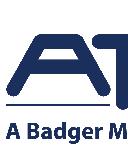




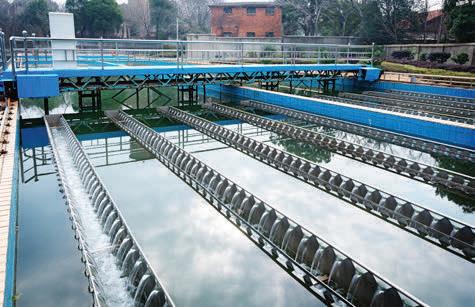

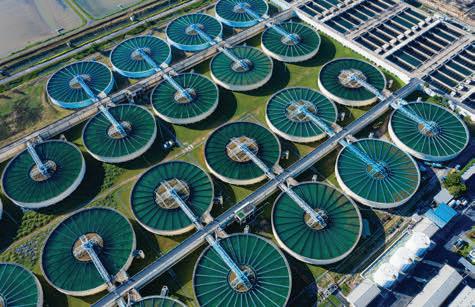
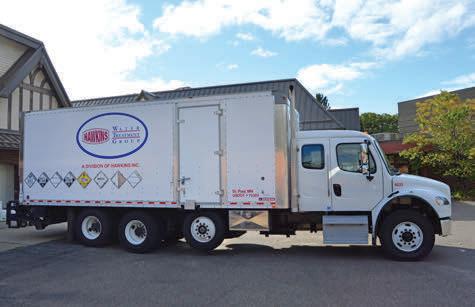
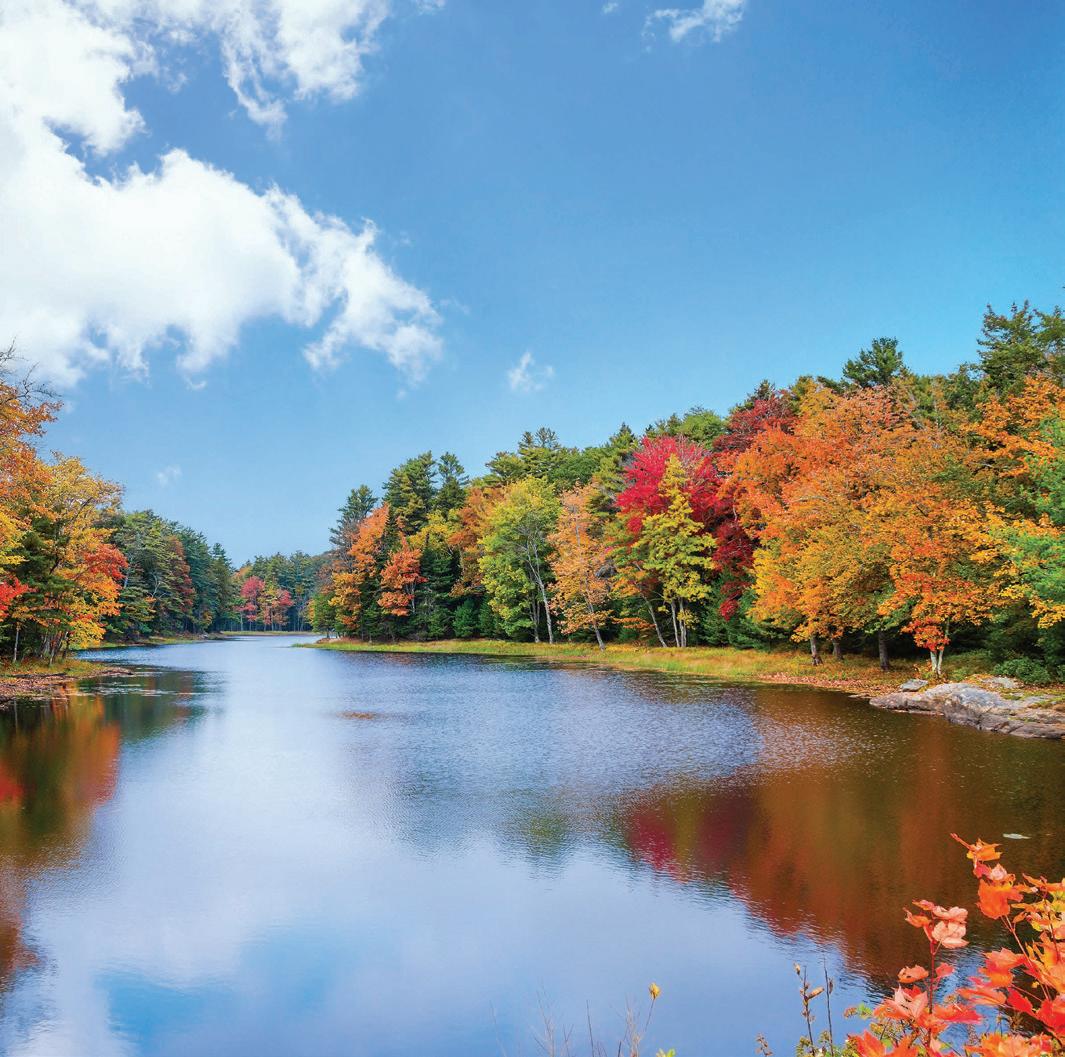



OAWWA is thrilled to announce the launch of its revamped website, representing a significant stride forward in its commitment to advancing the water profession throughout the Buckeye State. This redesigned platform serves as a pivotal tool in keeping our membership connected, informed, and engaged.
1. Fresh Look and Enhanced Functionality: Experience our website’s fresh new look and improved functionality, designed to provide a seamless and user-friendly browsing experience. Navigate with ease, access information effortlessly, and stay connected with fellow members.
2. Social Networking Support: Stay connected and engaged with your peers through built-in social networking support. Share updates, connect with colleagues, and foster meaningful professional relationships within the Ohio AWWA community.
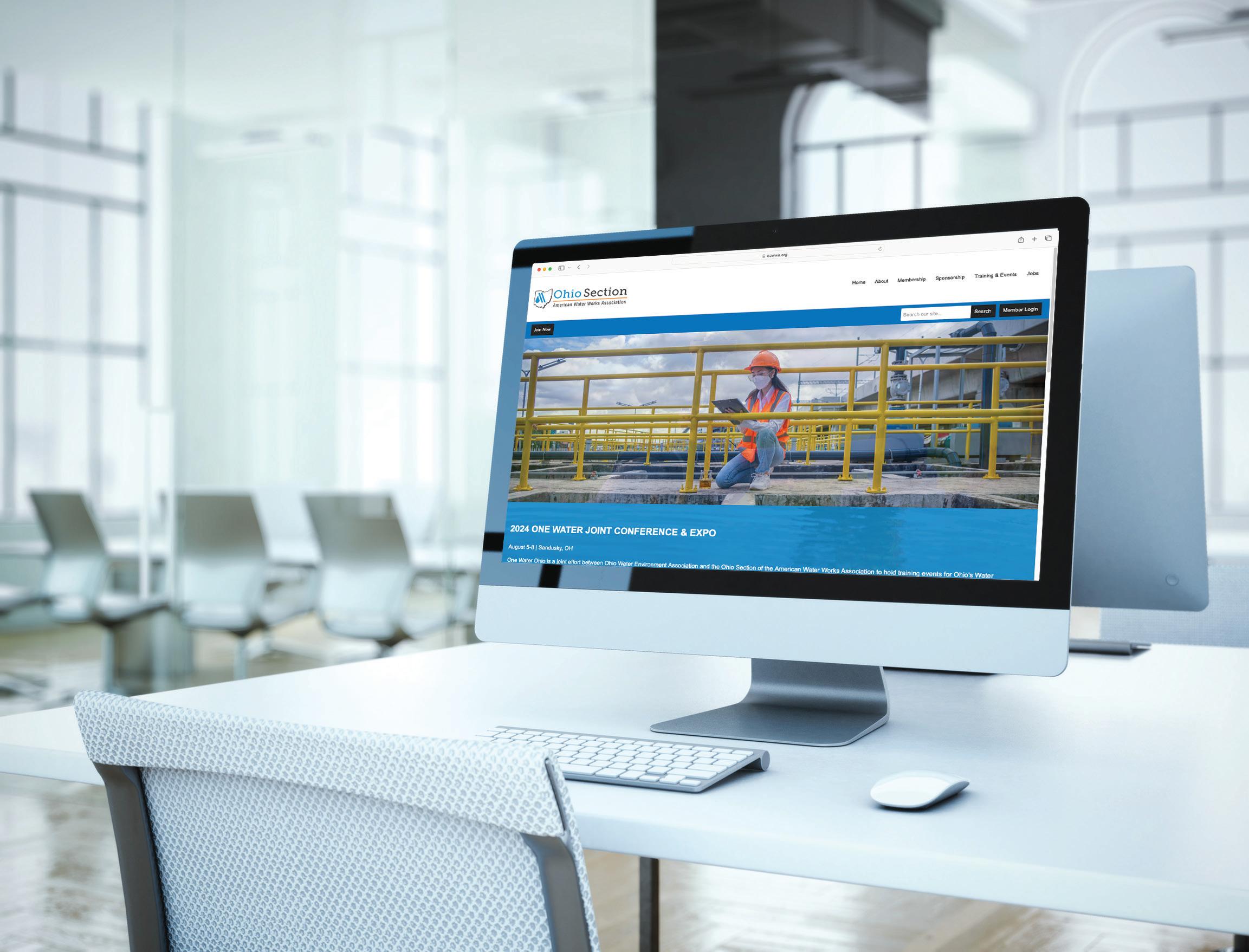
3. Simple Tools for Communication: Utilize intuitive communication tools to stay in touch with other members, committees, and stakeholders. Whether it’s sharing updates, documents, or photos, our platform facilitates seamless communication and collaboration.
4. Resource Sharing: Access a wealth of resources to support your professional development and initiatives. From educational materials to best practices, our website serves as a central repository for valuable information, empowering you to excel in your role.
5. Member Landing Page: Explore the new member landing page, providing personalized access to exclusive content, updates, and resources tailored to your interests and involvement within Ohio AWWA.

In addition to these exciting new features, the Ohio AWWA website will continue to provide essential support for event registration and payment, e-communications, and member management. Count on us to deliver seamless and efficient services to enhance your experience and facilitate your participation in our events and initiatives.
Discover the enhanced capabilities of the Ohio AWWA website and become an active participant in advancing the water profession in Ohio. Whether you’re a seasoned professional or new to the field, there’s a place for you in our vibrant and supportive community.
Visit the newly redesigned website at www.oawwa.org to explore all the exciting features and resources now available to you.
Together, let’s propel the water profession forward and make a lasting impact on water quality, sustainability, and resilience across Ohio.
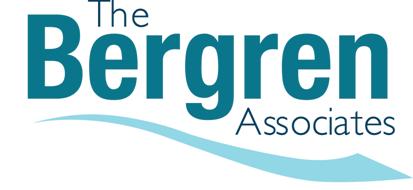
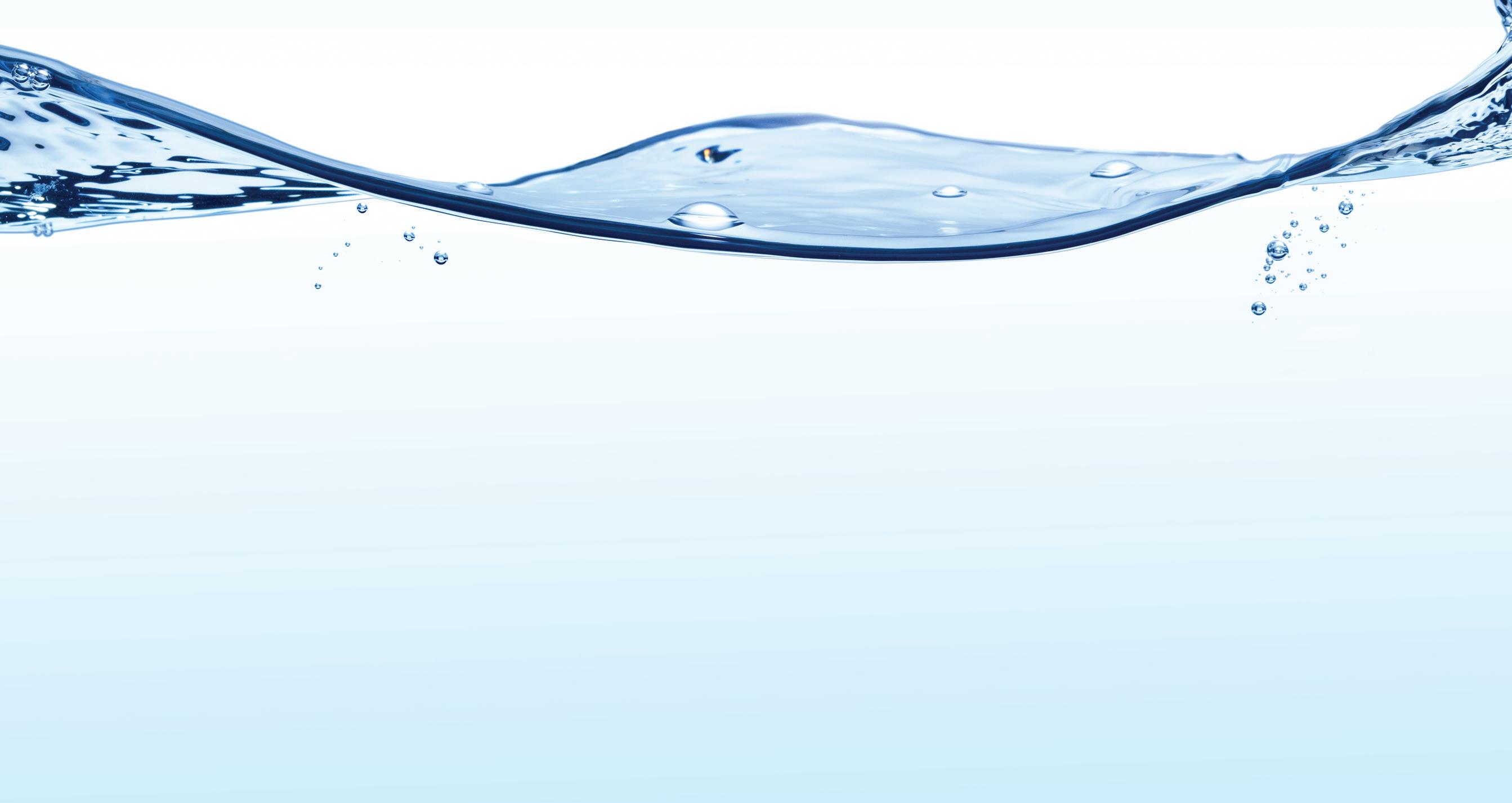
STRATEGIC PLAN
STRATEGIC PLAN
STRATEGIC PLAN
2024-2026
STRATEGIC PLAN
2024-2026
2024-2026
2024-2026
VISION
VISION
VISION
A better world through better water
A better world through better water
A better world through better water MISSION
MISSION
MISSION
Providing solutions to effectively manage the world’s most vital resource
Providing solutions to effectively manage the world’s most vital resource
Providing solutions to effectively manage the world’s most vital resource
CORE VALUES
CORE VALUES
CORE VALUES
Protect public health
Protect public health
Protect public health
Inspire innovation
Inspire innovation
Inspire innovation
Share best practices
Share best practices
Share best practices
Safeguard the environment
Safeguard the environment
Safeguard the environment
Advance diversity & inclusion
Advance diversity & inclusion
Advance diversity & inclusion
Strengthen public trust
Strengthen public trust
Strengthen public trust

OAWWA will foster an inclusive and valuable community for the water sector
Maximize member experience and benefits usage
Enhance new member experience
Retain and recruit members representing the entire water community
OAWWA will ensure long-term success and stability through balanced leadership
Identify and incorporate new voices and perspectives
Effectively generate, invest, and manage resources to serve members
Continue to develop volunteer talent within Districts
Diversify training offerings for drinking water professionals
Develop facilitated and interactive learning for operators pursuing or renewing drinking water licenses
Optimize program affordability and relevance
Leverage relationships with other industry organizations
Optimize and advance communications to set the standard for member awareness and organizational transparency
Continuously communicate the value of OAWWA membership
Evaluate Section member communications and outreach in relation to peer Sections and local industry organizations
Enhance visibility of water careers for a more resilient workforce
Create and curate recruitment materials emphasizing the variety of opportunities in water
Advocate for clearer and streamlined water career paths
Increase events, outreach, and engagement with trade schools, colleges, and high schools
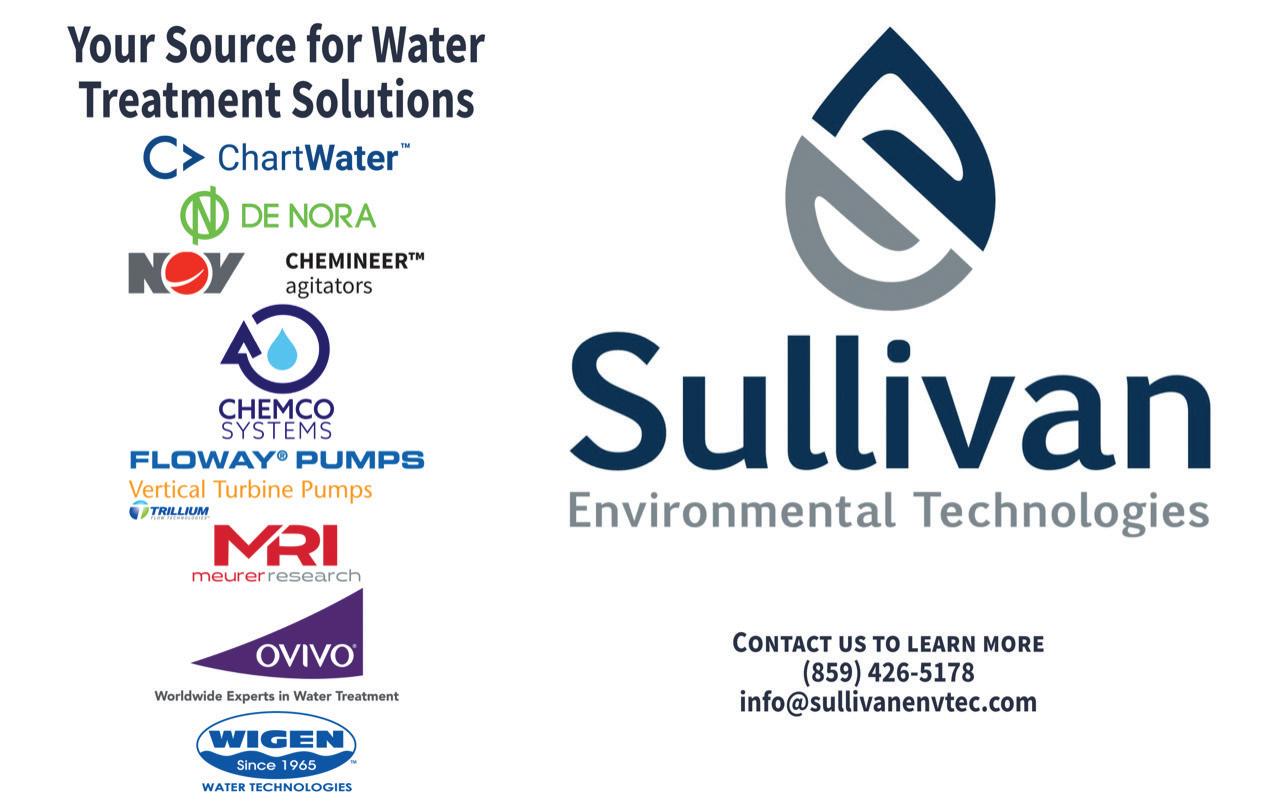

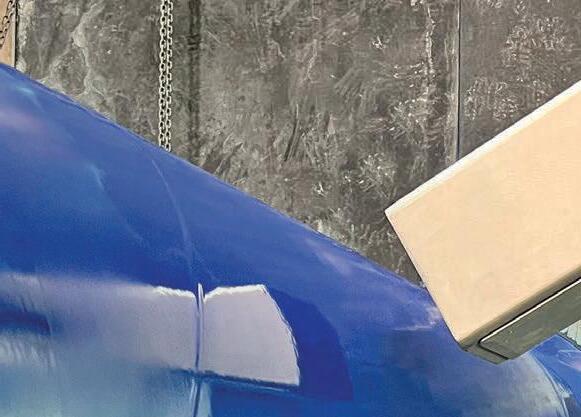







WHEN

A PHRASE, BUT OUR COMMITMENT. AMERICAN SpiralWeld Pipe is highly advanced. From engineering to a dvanced robotic welding to controls that ensure a perfect layer of coating, our technology means unmatched precision in every pipe we ship. In turn, that means years of unmatched performance from everypipe you install—with the data to prove it. Call AMERICAN today. Or, even better, tour any of our mills. And see why, with our pipe, the future has already arrived.

DUCTILE IRON PIPE FLOW CONTROL
INTERNATIONAL
SPIRALWELD PIPE
STEEL PIPE










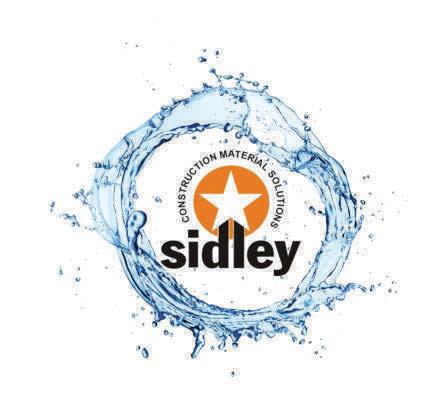
All R.W. Sidley silica filter sands and gravels are washed, dried and screened at our Thompson, OH, plant. All silica filter sands meet AWWA specifications for granular filter media and are NSF Certified for Drinking Water System Components.
Filter Media Uses:
• Water well packing
• Potable drinking water
• Residential septic systems
• Rapid flow sand filters




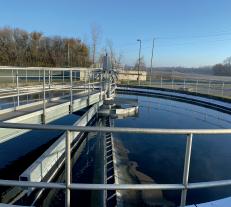


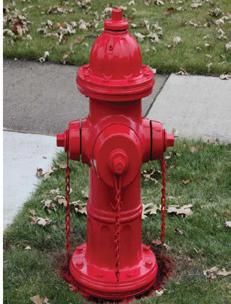

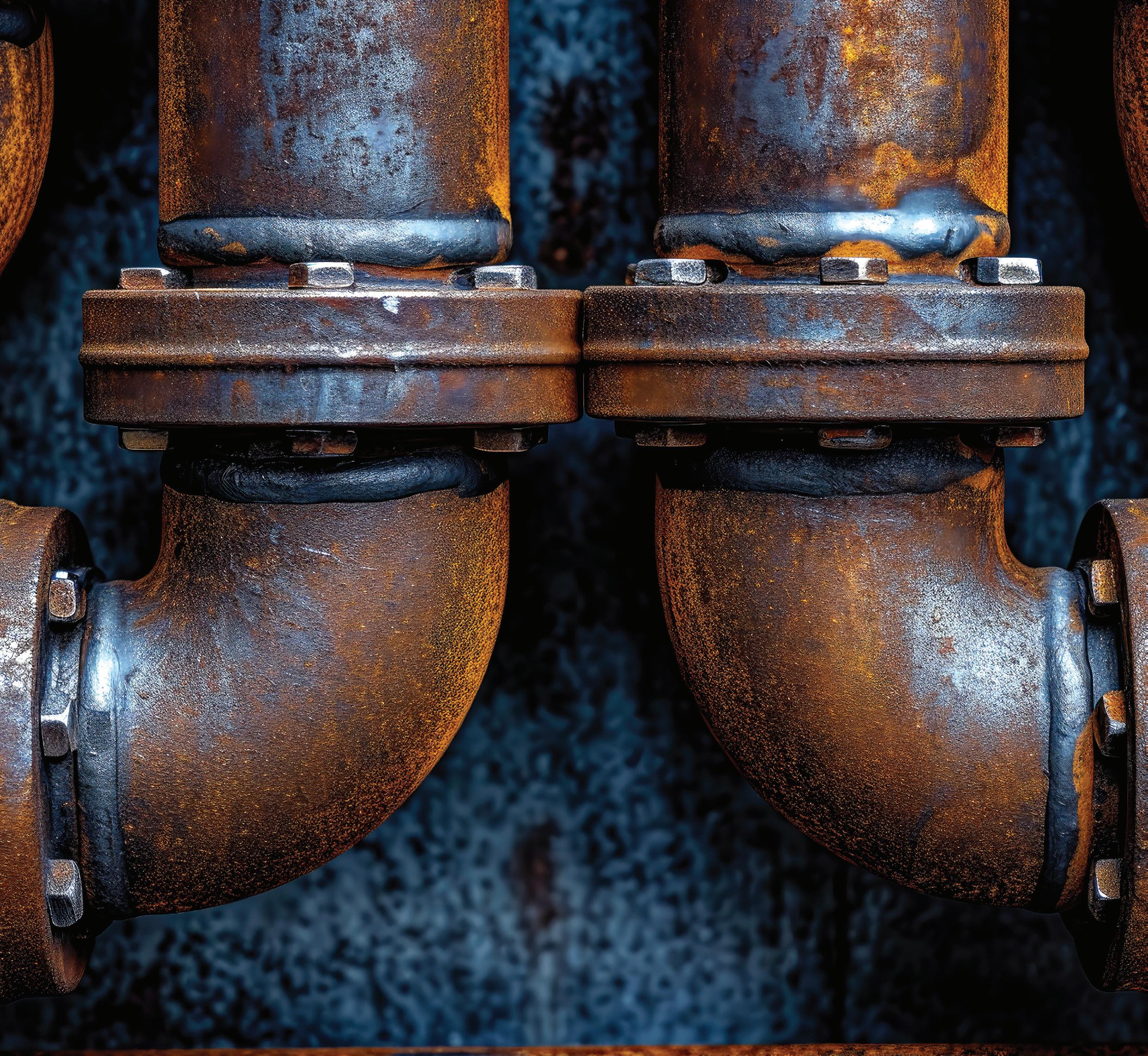
Are you thinking about making a change to your water system’s source or treatment? One important factor to consider is the impact this change can have on the corrosivity of the finished water for lead and copper corrosion control. Consideration of possible impacts early in the process helps ensure corrosion control treatment (CCT) requirements are addressed and incorporated into the final design of the project. To help water systems address any potential issues, Ohio EPA has developed rules and guidance on corrosion control evaluations for source and treatment changes.
Ohio Revised Code (ORC) 6109.121(A)(6) establishes rules requiring community and non-transient noncommunity water systems to conduct a new or update an existing CCT evaluation under certain conditions. Ohio EPA’s Ohio Administrative Code (OAC) Rule 3745-81-81(F)(1) requires that public water systems (PWS) conduct a corrosion control evaluation with changes to source or treatment, regardless of whether the PWS is in compliance with the lead and copper rule. The scope of the evaluation depends on the type of source or treatment change that is proposed. Most detail plan approval applications for
treatment or source changes received by Ohio EPA’s Division of Drinking and Ground Waters require some type of corrosion control evaluation. In addition, operational changes, such as using an emergency interconnect for an extended period may necessitate a corrosion control evaluation.
Ohio EPA created ENG-9119-GD to further explain what source and treatment changes trigger a corrosion control evaluation and what is required for that evaluation. The types of source changes are listed in Appendix A and treatment changes are listed in Appendix B. If multiple changes are proposed, choose the highest risk level. Use Tables 1 and 2 to determine the requirements.
The steps in the process are stated in OAC Rule 3745-81-81(D) and described below:
1. Collect initial water quality parameters (WQPs) in both the distribution system and the entry point(s). Collection of raw WQPs may be necessary for source changes or certain treatment changes. Initial monitoring for source and treatment changes includes sampling and analysis of water quality parameters listed under the baseline monitoring in ENG-9119-GD. If the PWS already has optimal water quality parameters (OWQPs), these parameters are in addition to the parameters making up the baseline monitoring list. Baseline monitoring is important to establish the finished water quality ranges currently achieved, to help predict proposed finished water quality and to confirm finished water quality after the change in source or treatment.
2. The PWS conducts an evaluation or re-evaluation of corrosion control treatment. The PWS submits the CCT recommendation or study for Ohio EPA approval. If the corrosion control treatment recommendation requires that additional treatment be added, then the PWS must obtain detail plan approval for the treatment as determined by the CCT recommendation or study.
3. Ohio EPA reviews CCT evaluation and applicable detail plans for plan approval. Special conditions included in the plan approval will outline monitoring requirements once the source or treatment changes and applicable corrosion control treatment are online. WQP goals for finished water at entry point and distribution taps will also be outlined in the plan approval report.
4. The PWS installs the proposed treatment based on plans submitted, including any CCT. The PWS cannot initiate the new source or treatment until Ohio EPA approves the CCT evaluation and detail plans.
5. The PWS conducts follow-up WQP monitoring for at least two 6-month monitoring periods at the entry point(s) and distribution system. The number of distribution sample sites is based on population
as outlined in OAC Rule 3745-81-87 for follow up monitoring. In most cases, lead and copper sampling will also be reset to 6-month standard monitoring for at least two 6-month monitoring periods. The number of samples is based on population as outlined in OAC Rule 3745-81-86 for standard monitoring.
6. After the required monitoring period, Ohio EPA will review the water quality data and lead and copper results from the follow up monitoring to determine if the corrosion control treatment recommendation was implemented and effective in controlling lead and copper.
a. Ohio EPA may designate OWQPs or modify them. Most systems that will have OWQPs established or modified are those that serve a population greater than 50,000 or had an action level exceedance (ALE) for lead and/or copper. OWQPs will be set for entry point and distribution taps for one, or combination of, pH, alkalinity and/or orthophosphate residual.
b. If no OWQPs are designated, a letter will be sent accepting the corrosion control treatment or that the source/treatment change had no negative impact on the corrosivity of the finished water. The evaluation step is complete, and the system operates in accordance with water quality parameters goals set forth in the approved CCT plan.
7. If the system has Director-assigned OWQPs, the system operates to meet the water quality ranges or minimums that are designated per plan approval. The PWS conducts WQP monitoring for at least two 6-month monitoring periods after designation and must report the results to Ohio EPA in accordance with rule. OWQP monitoring will be subject to excursions per rule.
8. A PWS in compliance with OWQPs and lead and copper may have their monitoring reduced by Ohio EPA and will continue with OWQP and lead/copper monitoring. There are three types of evaluations required based on the risk level associated with the proposed change in source and treatment. The types of evaluations are described below:
• Comparison Study with Waiver Request
• In accordance with OAC Rule 3745-81-81(G), Ohio EPA may waive the requirement to conduct a new or updated CCT recommendation upon demonstration by a PWS that a source or treatment change will not impact the water quality or corrosiveness of the system.
• To demonstrate that a proposed source or treatment change will not impact the water quality or corrosiveness of the system, a PWS must
provide a comparison of current water quality and proposed water quality, as well as a letter summarizing the information and requesting the waiver. To obtain proposed water quality, systems may have to complete a bench scale or pilot study to determine the effects of the proposed change.
• Corrosion Control Treatment Recommendation (CCTR)
• The PWS must submit the recommendation using Ohio EPA’s CCTR Form. Data gathered from WQP monitoring should be used to complete the CCTR Form. Appendix A of the CCTR Form must also be completed to compare current and proposed water quality for source and treatment changes.
• CCT Study
• The PWS must evaluate the impact and effectiveness of the installation of CCT in conjunction with the proposed change. Analyses should be based on analogous system comparisons, pipe rig/loop tests, metal coupon tests, or partial system tests.
• Data gathered from WQP monitoring should be used, in addition to data gathered throughout the CCT study to determine the need for CCT, and the type of CCT if needed. Chemical and physical constraints limiting the use of CCT or a particular type of CCT should be outlined. The effects of the change proposed and impact of the installation of CCT on other water quality treatment processes should be evaluated. Additionally, current and proposed water quality must be compared.
All evaluations must collect baseline WQPs before and after source/treatment change in the distribution system and entry point(s). These results must be submitted to Ohio EPA. Each evaluation must also submit the CCTR form to Ohio EPA.
The corrosion control treatment recommendation from the evaluation should aim to achieve optimal corrosion control treatment of lead and copper and be based on recent guidance provided by U.S. EPA’s Optimal Corrosion Control Treatment Evaluation Technical Recommendations (revised), 2016.
As a reminder, all drinking water plans must be submitted through ePlans at edocpub.epa.ohio.gov/ planreview. Instructions for submittal can be found at epa.ohio.gov/static/portals/28/documents/engineering/ ePlans-Instructions.pdf.
Resources:
For more information email lucas.froelich@epa.ohio.gov.


Reduces O&M Costs & Capital Expenses
As a result of the impervious nature of the SpectraShield Liner System, infiltration and ex-filtration is eliminated in structures. Operating and maintenance expenses are reduced, plant capacity is preserved, and plant expansion requirements may be delayed or eliminated.
Helps Protect the Environment
Prevents Corrosion
Rapid Trenchless Installation
Flexibility
Long Life
Versatile Experience
Cost competitive
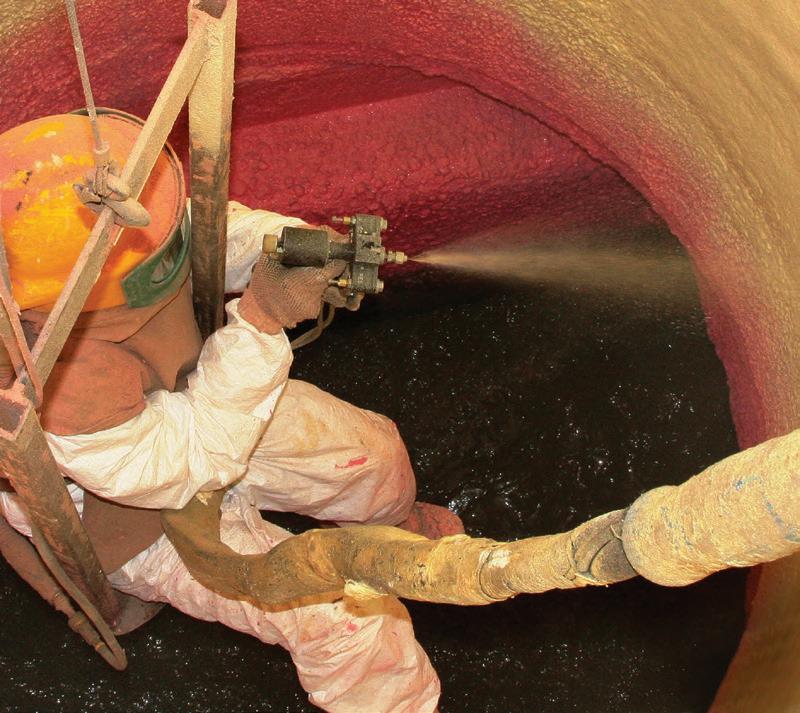
As a result of the long life and competitive installation cost, the life cycle cost for the SpectraShield Liner System is very low. In many cases the ROI is under 24 months.
Groundwater entering the system is reduced, allowing more to percolate to the aquifer. Reduced pumping requirements reduce energy use reducing the carbon footprint. SSOs (Sewer System Overflows) are reduced as infiltration is reduced.
The Spectrashield Liner System provides a protective barrier that prevents H2S and moisture from reaching the surface of the structure.
The SpectraShield Liner System can be installed in a typical 7 foot deep manhole in about an hour without any excavation. The manhole may be returned to service immediately upon completion of the installation. An average sized pump station or wet well application takes about 2 days from start to finish. The pump station or wet well may be returned to service immediately upon completion of the installation.
The multi-layer SpectraShield Liner System is flexible, allowing it to handle the stresses associated with structure settling, traffic loading, and freeze thaw cycles.
The SpectraShield Liner System has a design life of 100 years and comes with a 10 year manufacturer warranty. The first structures lined in 1993 are still in place, and in good condition.
The SpectraShield Liner System may be used in a variety of structures, such as; manholes, lift stations, wetwells, large diameter pipes, box culverts, headworks, grit chambers, weirs, and package WWTPs.
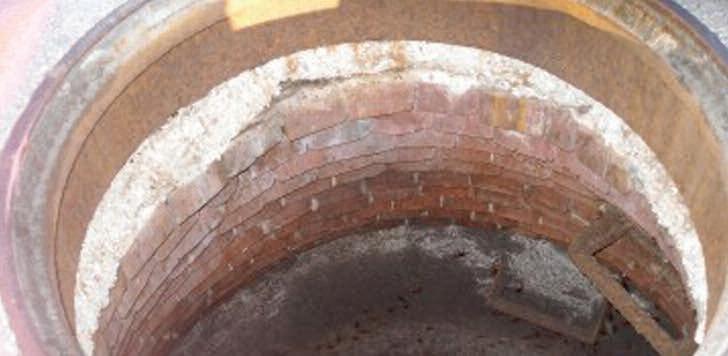

Since 1993, in-house applicators, and trained certified licensees, have applied the SpectraShield Liner System in over 105,000 structures. Over 11 million square feet of the SpectraShield Liner System have been applied.
The SpectraShield Liner System installation cost is very competitive with all other liners and coatings.

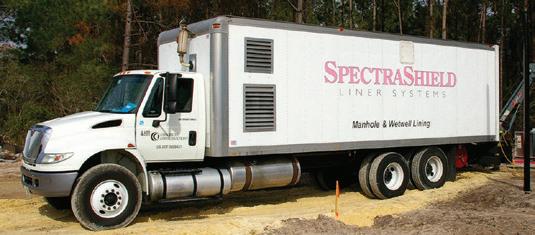
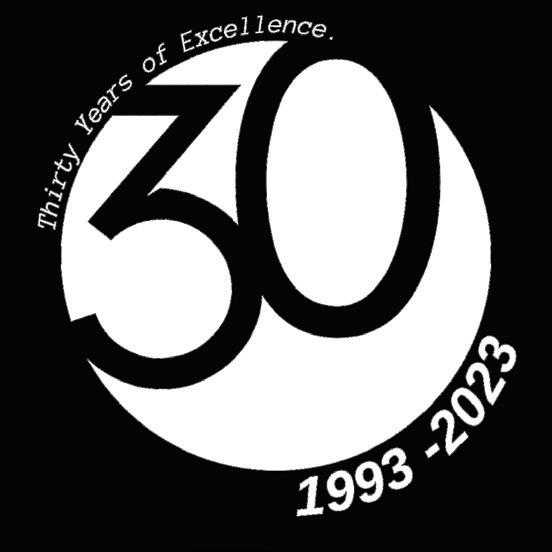


listen. think. deliver.
A water partnership with CDM Smith is about much more than engineering. It’s about thoughtful experts, powerful insights and smart decisions. It’s an alliance to help you manage precious resources and get the most value from your infrastructure investments.
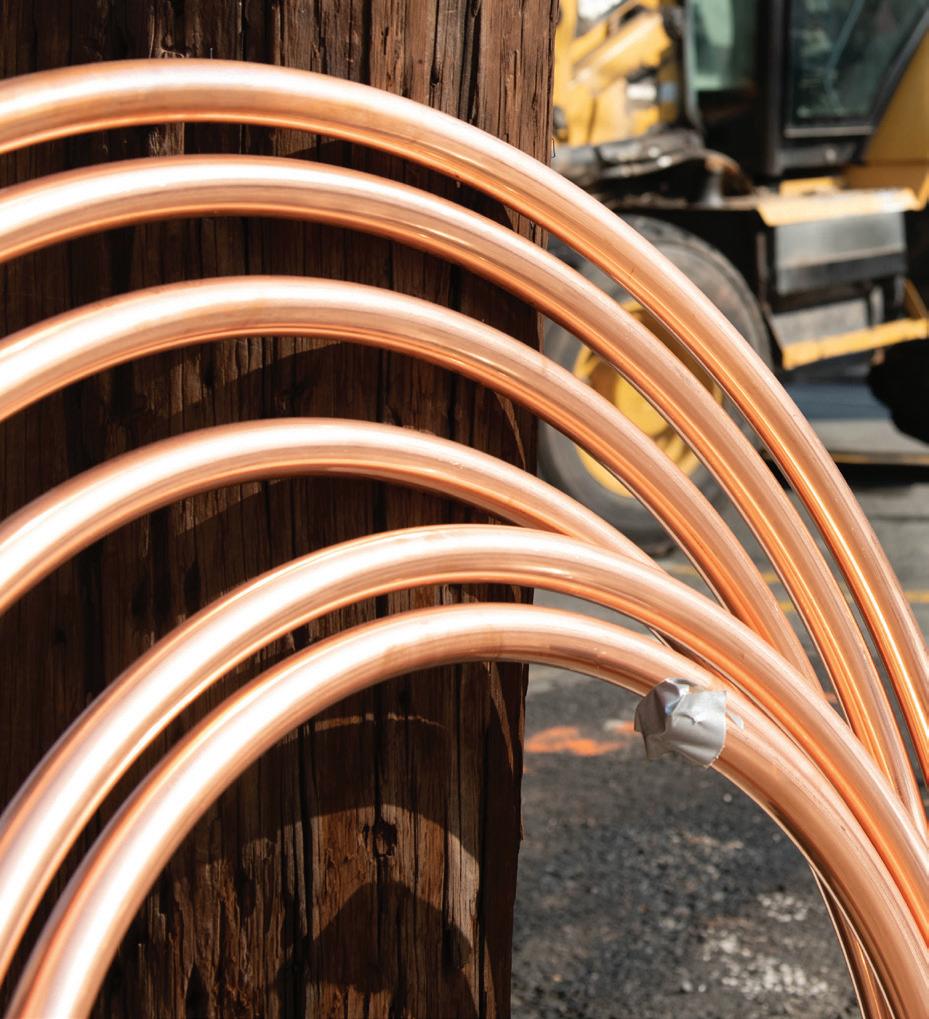
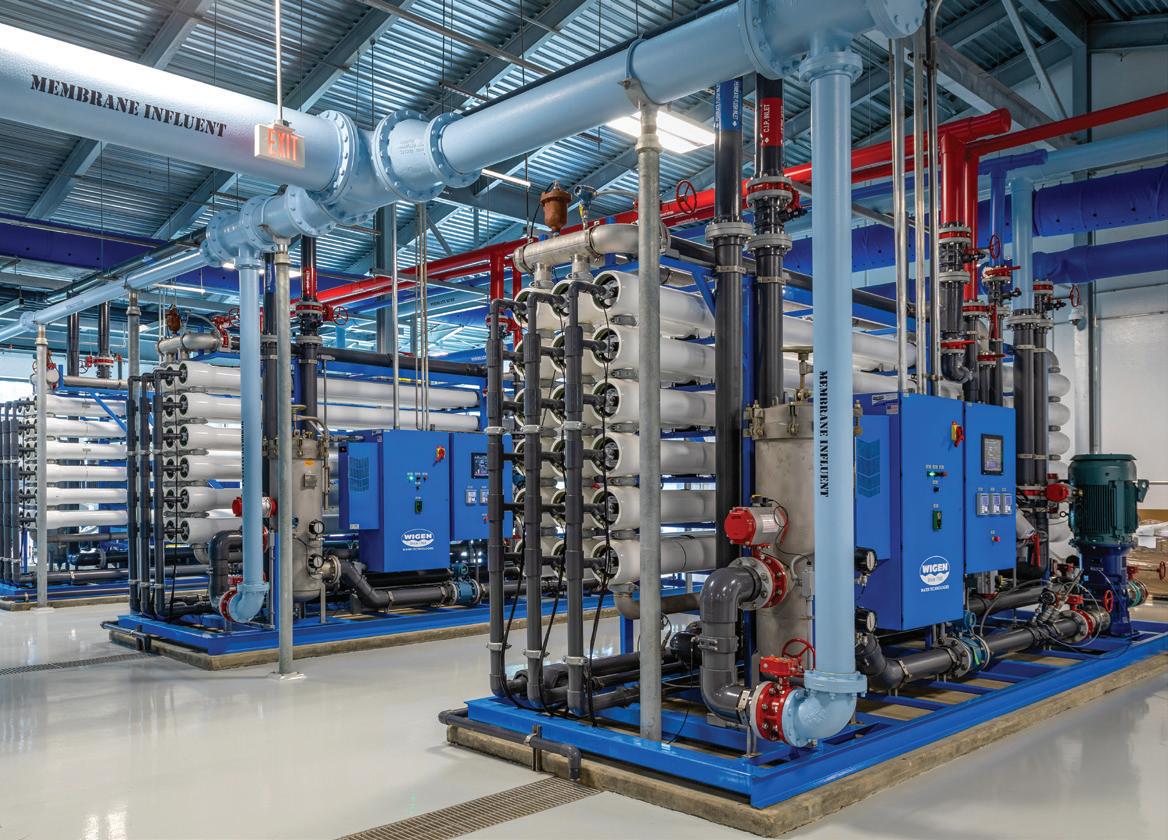

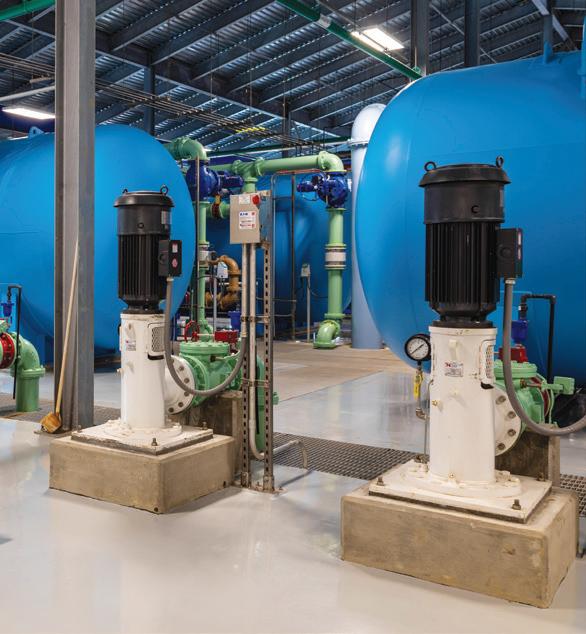

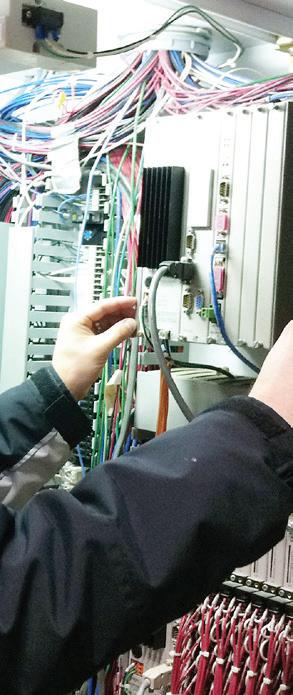

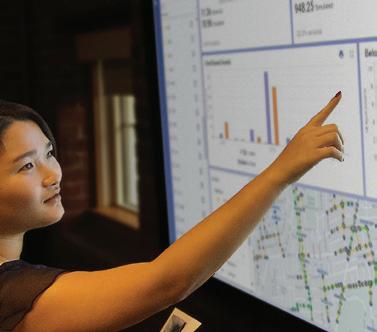

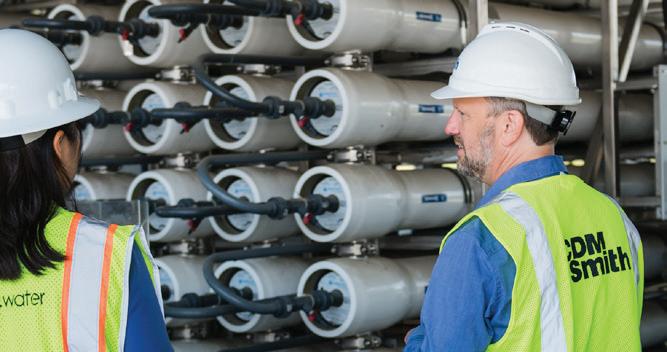
Columbus | Cleveland | Cincinnati | Wadsworth cdmsmith.com
AUGUST 5–8, 2024






 Kalahari Resorts & Conventions Sandusky, OH
Kalahari Resorts & Conventions Sandusky, OH





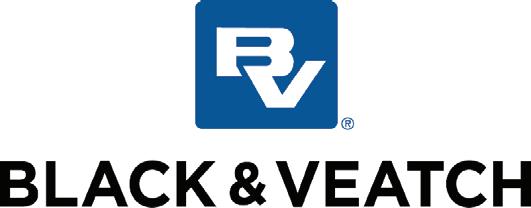



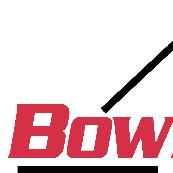







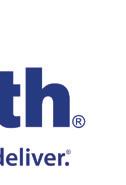


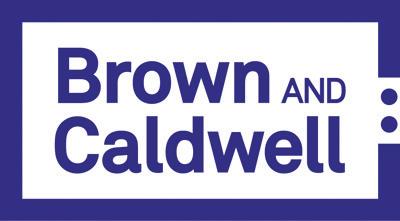










You already know AWWA provides water professionals with the best technical resources and networking opportunities. Now it’s time to share that value with your colleagues and unlock more benefits—more members means more connections, resources, and support for you!
Learn more: awwa.org/unlock-more24




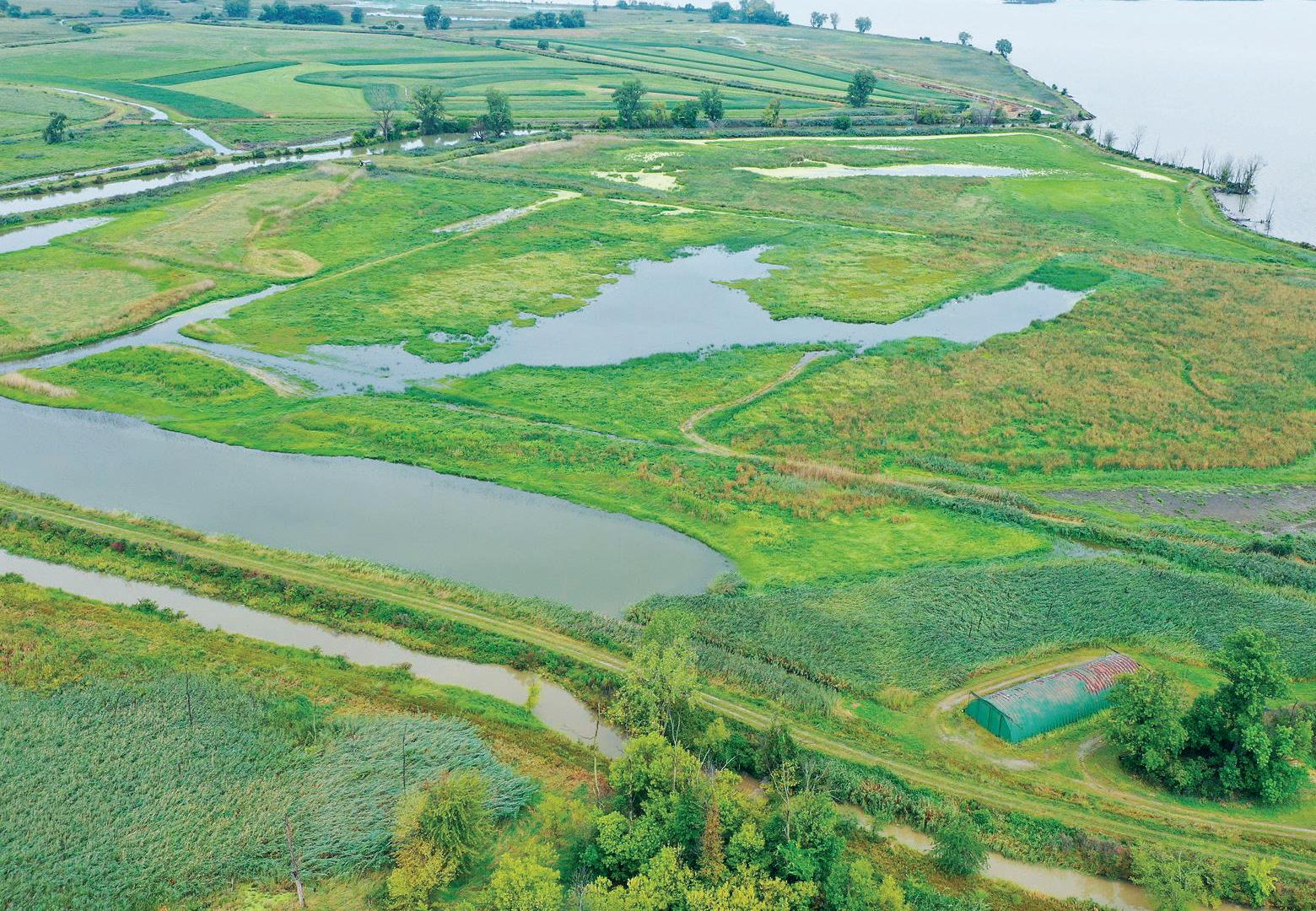
Source: The Nature Conservancy, www.nature.org
Working with partners throughout Ohio, TNC is working to revitalize the waters and wetlands that flow into Sandusky Bay. Visit nature.org to learn more about TNC and their projects across the USA.
Not far from where the waters of Sandusky Bay meet the shore, large yellow bulldozers sound their backup alarms as they rumble across the muddy ground. Backhoes dig up and shift soil, recontouring the land. At first glance, it looks like any other construction site, as soil is dug up and shifted around.
But this isn’t construction – this is large scale habitat restoration. And to understand why it’s happening we need to go back a few hundred years.
An Interconnected and Thriving Past
Located where the mouth of the Sandusky River connects to the waters of Lake Erie, Sandusky Bay is one of the most important bodies of water in northern Ohio with one of the largest ranges of coastal wetlands in the Lake Erie basin.
Before European colonization, it was a thriving, interconnected wetland matrix home to diverse wildlife and native vegetation. Fish, such as northern pike, used the shallow wetlands as nursery and spawning grounds, with vegetation providing shelter and plenty of food for young, newly hatched fish, such as insects and small crustaceans.
In the spring and fall, a cacophony of birdsong sounded from the shorelines, as migratory songbirds and waterfowl stopped at the waters and marshes to rest and refuel on their journeys. Indigenous Peoples fished the healthy, productive waters and foraged the plants growing throughout the open bay.
In fact, the Sandusky Bay was part of the Great Black Swamp – a deeply interconnected network of wetlands, waterways, dense forests and grasslands that stretched to northeast Indiana.
Wildlife Need Wetlands
Wetlands and the coastal areas around Sandusky Bay once supported diverse wildlife and native plants. While the isolated wetlands around Sandusky Bay today still support migratory birds and other wildlife, their populations have greatly declined due to the fragmented state of the land around the Bay.

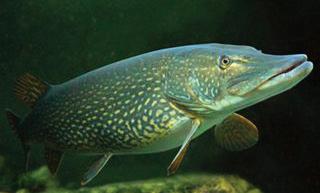
As part of the H2Ohio Initiative, The Nature Conservancy in Ohio is collaborating with a diversity of stakeholders on a vision to restore and enhance ecosystem function and habitat in Sandusky Bay.
But, in the 19th century, European settlers began to drain and transform the Great Black Swamp into rich and productive agricultural land which had lasting, unintended consequences for the health of Lake Erie
Today, Sandusky Bay looks far different from those earlier times, altered significantly by the dense population, various industries and agriculture in its surrounding areas. As the land was settled and developed, the Bay’s waterways were rerouted and its wetlands separated from each other. Shorelines are now hardened by earthen and rock dikes, disrupting the Bay’s ecosystem. Instead of waves dissipating on shore, the dikes ricochet the wave energy back into the Bay and churn up sediment making the waters turbid and preventing growth of native vegetation.
All of these factors together exacerbate the annual harmful algal blooms that erupt throughout the Western Lake Erie Basin during the warmer months. Thanks to the channelized and straightened waterways
and isolated wetlands, fertilizers and sediments from lands upstream flow into the Sandusky Bay before they can be naturally filtered, creating the perfect conditions for algae growth.
These landscape changes have also reduced suitable habitats for all kinds of wildlife, but especially for migratory and shore birds. While this area is still a birding hotspot, the abundance and diversity of migratory and shorebirds that once thrived here have declined as their habitat is now reduced to small, isolated wetlands.
As part of the H2Ohio Initiative, The Nature Conservancy in Ohio is collaborating with a diversity of stakeholders on a vision to restore and enhance ecosystem function and habitat in Sandusky Bay. The first part of this ambitious plan – the Pickerel Creek Riparian project – was completed in 2023, reconnecting the creek to its floodplain and restoring more than 50 acres of wetland habitat.
The newly enhanced, connected wetlands will allow for more natural

movement of water between the creek and land during storms. The reconnected floodplain and restored wetlands will also allow sediment and nutrients to settle out before reaching Sandusky Bay, improving water quality and reducing harmful algal blooms in the Bay during the summer.
Now in the next phase of this restoration, TNC and partners are planting diverse native wetland vegetation, which will increase fish and wildlife habitat. Monitoring and removal of invasive species will take place over the coming years to ensure that the native plants successfully establish.
Following the completion of the Pickerel Creek Riparian project, work will begin on the second project within the Pickerel Creek Wildlife Area near Raccoon Creek. As part of this work, TNC will restore more than four acres of coastal wetlands and plant native aquatic vegetation.
“Our work at Sandusky Bay is a testament to TNC’s ability to advance large, innovative projects, from beginning to implementation,” says TNC Restoration Ecologist Ashlee Decker. “Our work began
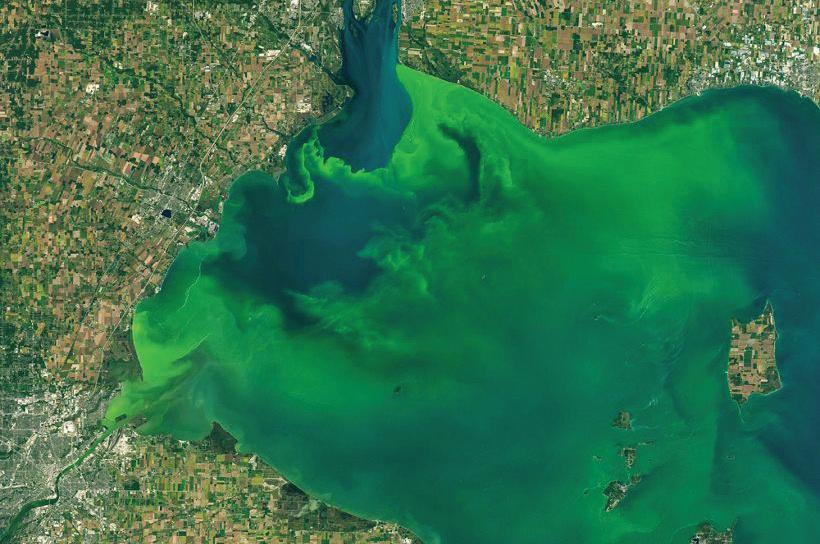 RECONNECTING WETLANDS Part of the Pickerel Creek Wildlife Area wetland restoration involved digging new channels to allow the isolated wetlands to connect to each other once again. © Ecological Restoration, Inc.
HARMFUL ALGAL BLOOMS Without connected wetlands to help filter out sediment and farm runoff, harmful algal blooms take place nearly every summer in the western basin of Lake Erie. © NASA
RECONNECTING WETLANDS Part of the Pickerel Creek Wildlife Area wetland restoration involved digging new channels to allow the isolated wetlands to connect to each other once again. © Ecological Restoration, Inc.
HARMFUL ALGAL BLOOMS Without connected wetlands to help filter out sediment and farm runoff, harmful algal blooms take place nearly every summer in the western basin of Lake Erie. © NASA
The Sandusky Bay Initiative, which TNC is a major partner, aims to restore more than 1,000 acres of habitat and associate ecological function to the entire Sandusky Bay area. More than dozen projects are in progress or being planned, including the Pickerel Creek Riparian project and the Raccoon Creek project, which TNC is leading.


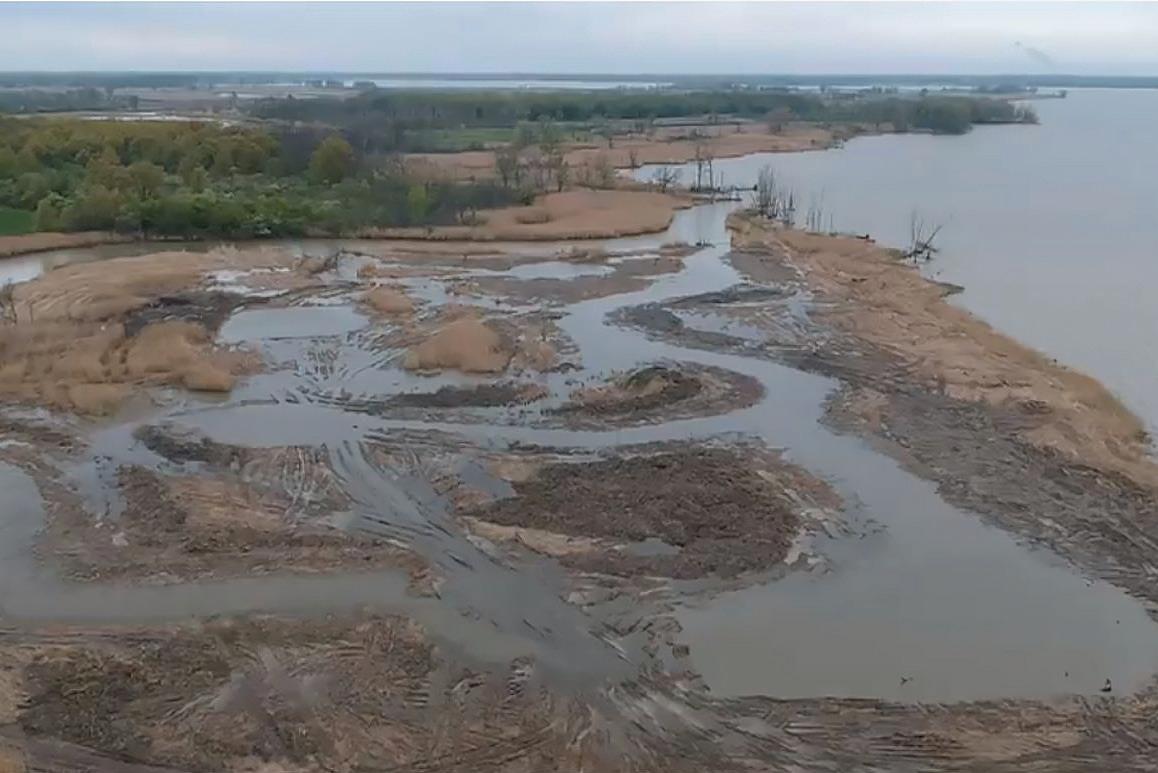
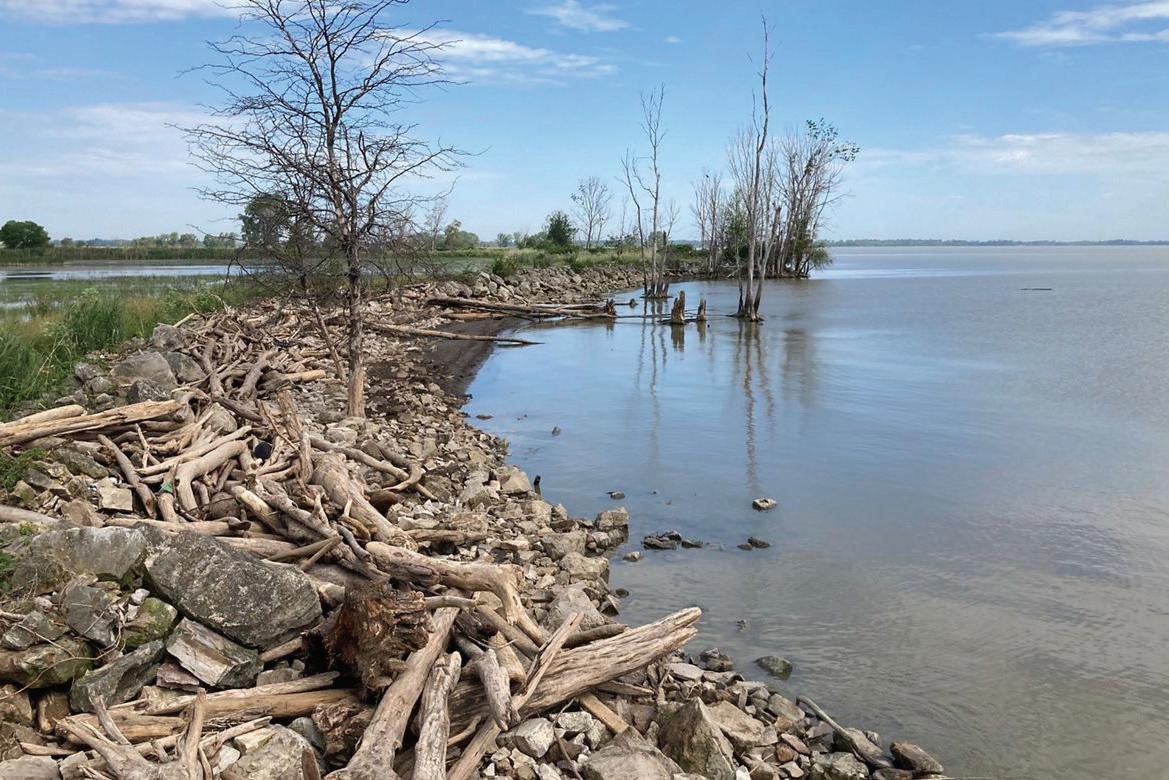

with our staff’s comprehensive work in the legislature advocating to establish the H2Ohio fund set up and following that all the way through to implementing actual restoration work on the ground and following that work into the future to ensure it succeeds.”
The Pickerel Creek Riparian Project and the Raccoon Creek Project are part of a larger landscape-scale restoration vision through the Sandusky Bay Initiative, which aims to restore more than 1,000 acres of habitat and associated ecological function to the entire 40,000-acre Sandusky Bay.
There are more than a dozen projects being planned over the next decade, with numerous partners and stakeholders, such as the Ohio Department of Natural Resources and the Ohio Division of Wildlife, working together to achieve this conservation vision. TNC is a major
player in this initiative, leading the way in planning, design and managing funds to accomplish the work.
“It’s a complex system, which requires a lot of science to inform restoration,” says TNC Natural Infrastructure Director Alexis Sakas. “Strategically restoring natural infrastructure is novel work for TNC in the Midwest and for Lake Erie. We can’t put things back to exactly the way they were, but we can create more habitat and improve Sandusky Bay for nature and people.”
What’s more, this work contributes directly to TNC’s 2030 goals for conserving rivers and protecting people from climate change. Making Sandusky Bay more resilient through restoration and nature-based solutions has cascading effects on the broader Lake Erie and Great Lakes systems, ultimately helping create places where people and nature thrive.
To learn more about these initiatives, visit www.nature.org/en-us/about-us/ where-we-work/united-states/ohio/ stories-in-ohio/restoring-sandusky-bay.
About halfway through the restoration and rechanneling work at the Pickerel Creek Wildlife Area, you can already see how the wetlands and Sandusky Bay are being reconnected. © Ecological Restoration, Inc.
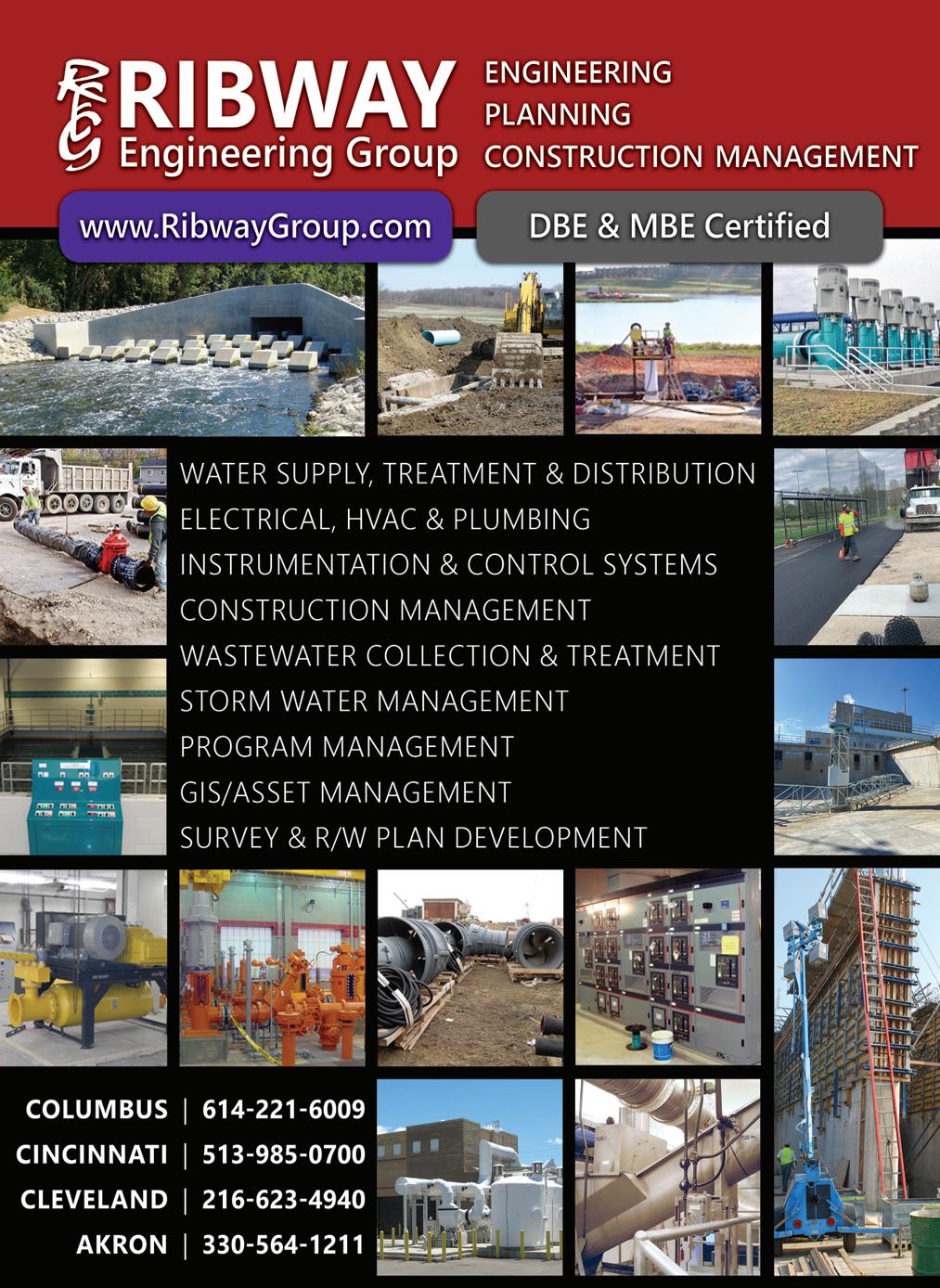



Learn how to demystify corrosion control planning and implementation through AWWA’s Corrosion Control eLearning program. Geared toward utility staff, laboratory specialists, engineers, and regulators, this online education program will guide you all the way—from the chemistry of corrosion to performing a corrosion control evaluation. Courses are self-paced and may be completed on your own schedule.
• Course 1: Corrosion Control Theory and Treatment Options
• Course 2: Assessing Need for a Corrosion Control Evaluation
• Course 3: Performing a Corrosion Control Evaluation
• Course 4: (coming soon): Using a Corrosion Control Evaluation to Help Meet the Lead and Copper Rule Revisions (LCRR)
Stay ahead of LCRR, become an expert on corrosion control theory and treatment, and help protect your community.
Learn more and register: www.awwa.org/Corrosion-Control



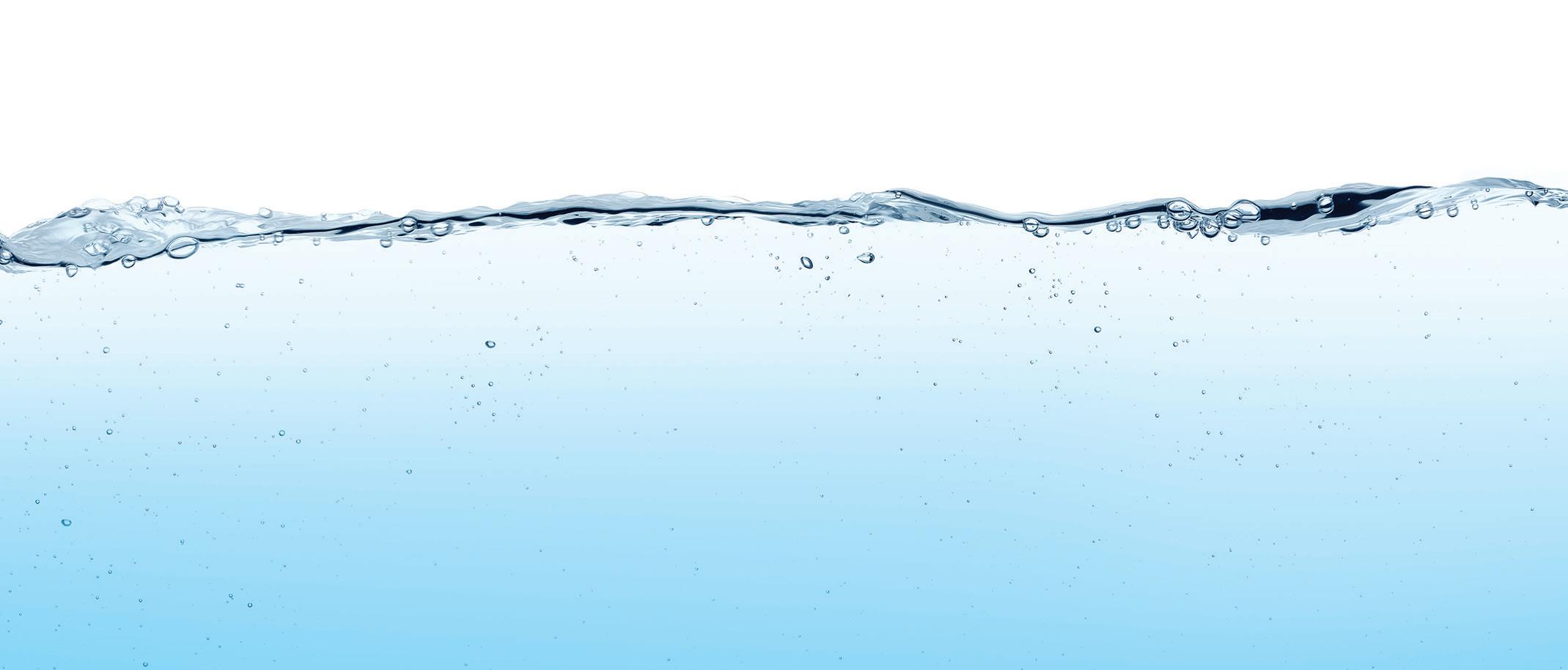

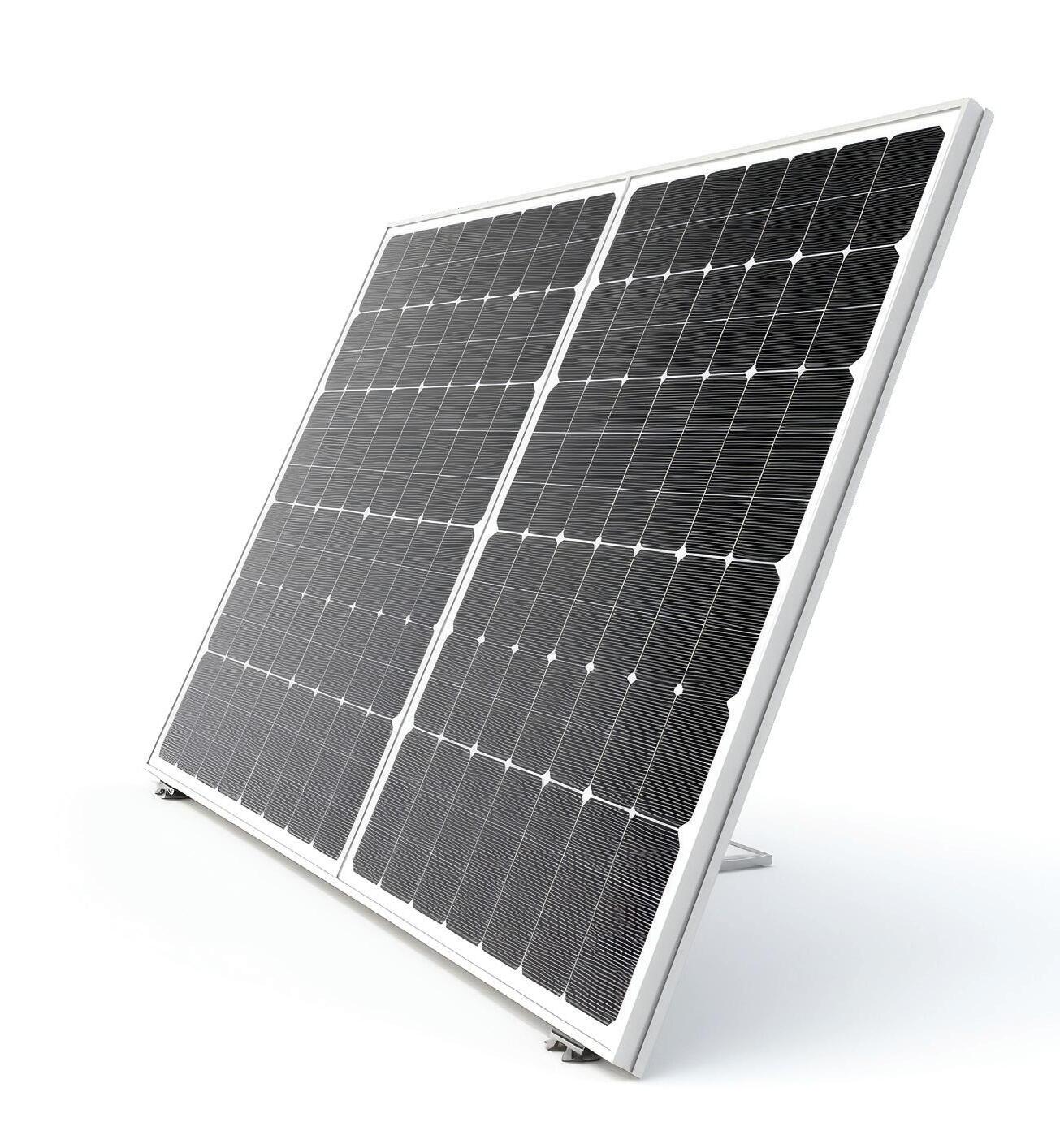
In Delaware County, Ohio’s fastest growing county for the better part of the past two decades, land is quite literally at a premium. So, when Del-Co Water (Del-Co) decided to explore installing solar power to augment its energy needs, it wasn’t apparent where to look for ground. Then, as members of Del-Co’s Environmental Sustainability Committee brainstormed ideas, the idea of floating solar was discussed. Floating solar has been utilized in other parts of the United States, why not bring it to Ohio someone asked? And thus began the process of bringing FPV (floating solar photovoltaic) to Ohio!
Sustainability efforts began to be solidified several years ago at a Board of Directors meeting in which it was decided that Del-Co should place increased importance on environmental stewardship and sustainability. Del-Co has always considered its environmental impact, but this directive from the Board would help to formalize and solidify existing efforts. Soon thereafter, an Environmental Sustainability Committee (ESC) was formed. The ESC is a staff-driven committee consisting of diverse, passionate, dedicated Del-Co associates. The environmental sustainability directive would also be formalized in Del-Co’s Strategic Planning efforts as one of five key tenants that will guide Del-Co for the next decade. While some of these efforts are more traditional in nature (e.g., electric vehicles, habitat restoration, wetland mitigation, and composting), the FPV has brought a lot of excitement and possibility to Del-Co.
Del-Co Water is a member-owned, non-profit, cooperative drinking water company serving approximately 56,000 customers in the central Ohio region. While most customers reside in Delaware County, the 820 square mile service area extends into seven additional counties – Marion, Morrow, Knox, Franklin, Union, Licking, and Crawford. Del-Co owns and operates four water treatment plants (WTP) with a total capacity of 45 MGD. Three of the four WTPs are surface water plants and the fourth is a ground water plant. For the three surface-water WTPs, Del-Co maintains six upground, off-stream reservoirs which are utilized to stage raw water and provide necessary supply. The total storage of the six upground reservoirs is approximately 2.5 billion gallons of water.
As the exploratory stage progressed for the FPV project, one of the upground reservoirs at Del-Co’s Olentangy WTP emerged as the ideal location. Del-Co’s Olentangy WTP is its largest – with a capacity of 28.8 MGD. On this site, there are four upground reservoirs that draw source water from the Olentangy and Scioto Rivers. The water is pumped into the largest reservoir, then fed by gravity through the remaining three reservoirs, and finally into the WTP.
The selected reservoir, Upground Reservoir #4, is situated just west of the treatment plant, making it an ideal location for the installation. In total, the reservoir contains a volume of about 230 million gallons of water with a surface area of 29 acres.
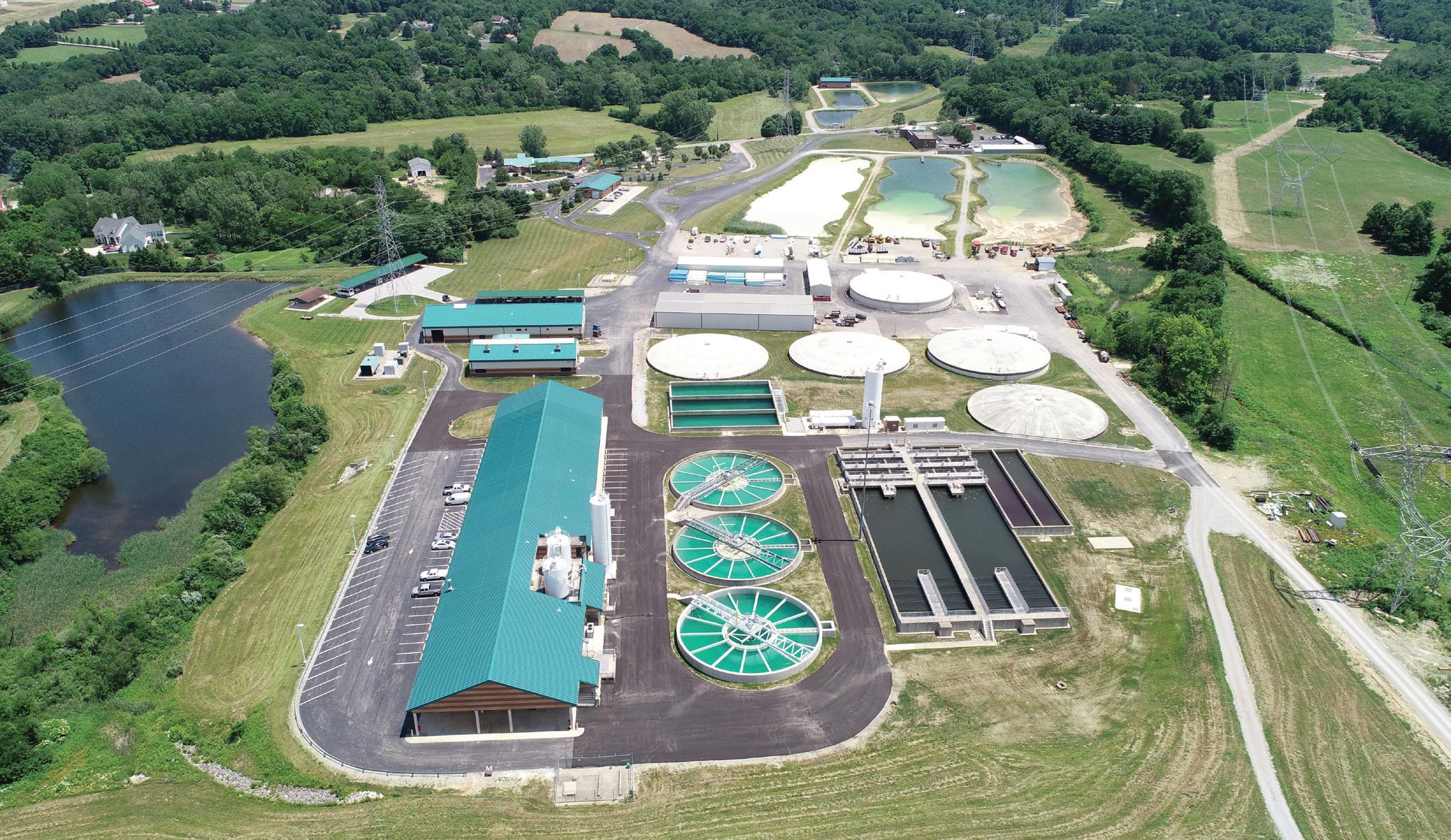
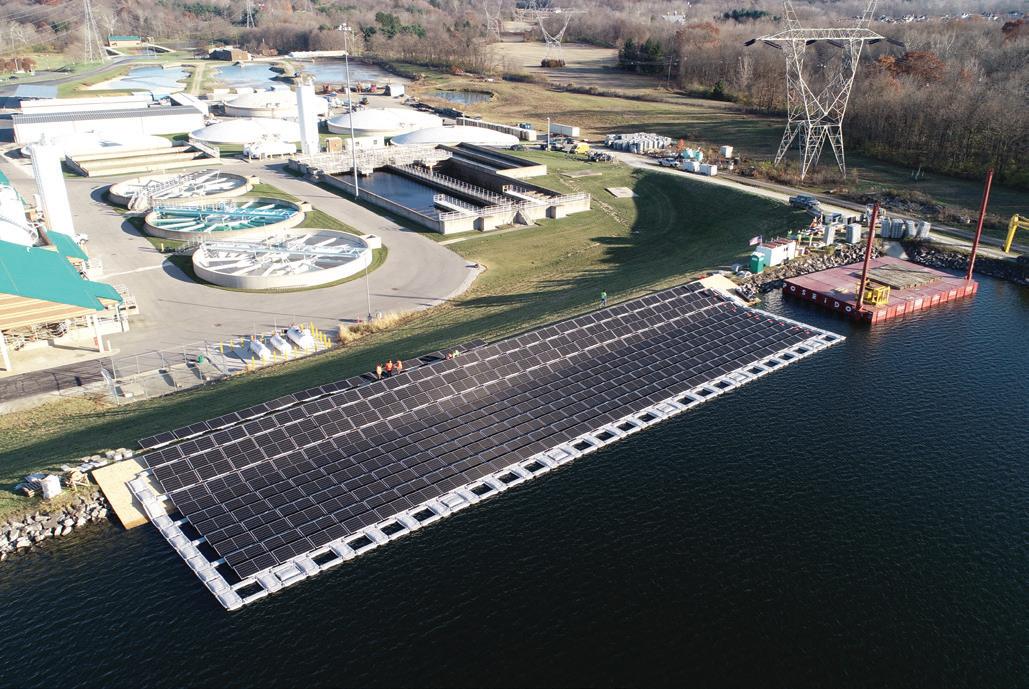
As the daunting task of developing the solar project began, Brian Leach, Facilities Manager at Del-Co Water, was tapped to spearhead the project. During development, it became clear that there were other opportunities, not just the FPV, where solar could be installed. Coincidentally, at the same time, Del-Co was constructing a new building to house its Distribution and Engineering Departments. The building, the Wolf Water Center (an eventual winner of Columbus Business First’s 2023 Award for Best Industrial Project), provided another opportunity for additional solar arrays. The vision was a multifaceted approach that combined a rooftop solar array, carport array, and the FPV. All three installations would then be tied into a common point, providing electricity to the Olentangy WTP.

As the project progressed, many challenges surfaced. From financing concerns to supply chain issues, there were many instances when Brian thought the project may dry up or die on the vine. But through perseverance and persistence, the complex issues of financing, regulatory, and logistics were overcome. Of course, Brian could not have done it without great partners. Del-Co worked with MSI Utilities, D3Energy, and ARP Solar to bring this project to fruition. The FPV installation was completed in early 2024, with the full project expected to be complete by the summer. At that time, the system will be charged, fully operational, and providing power to the Olentangy WTP.
For the FPV, Del-Co selected a product from Ciel & Terre, the Hydrelio®. The Hydrelio® floating system is comprised of solar cells, HDPE plastic floats, mooring lines (polyester rope, galvanized steel cables, galvanized steel chain), and anchors

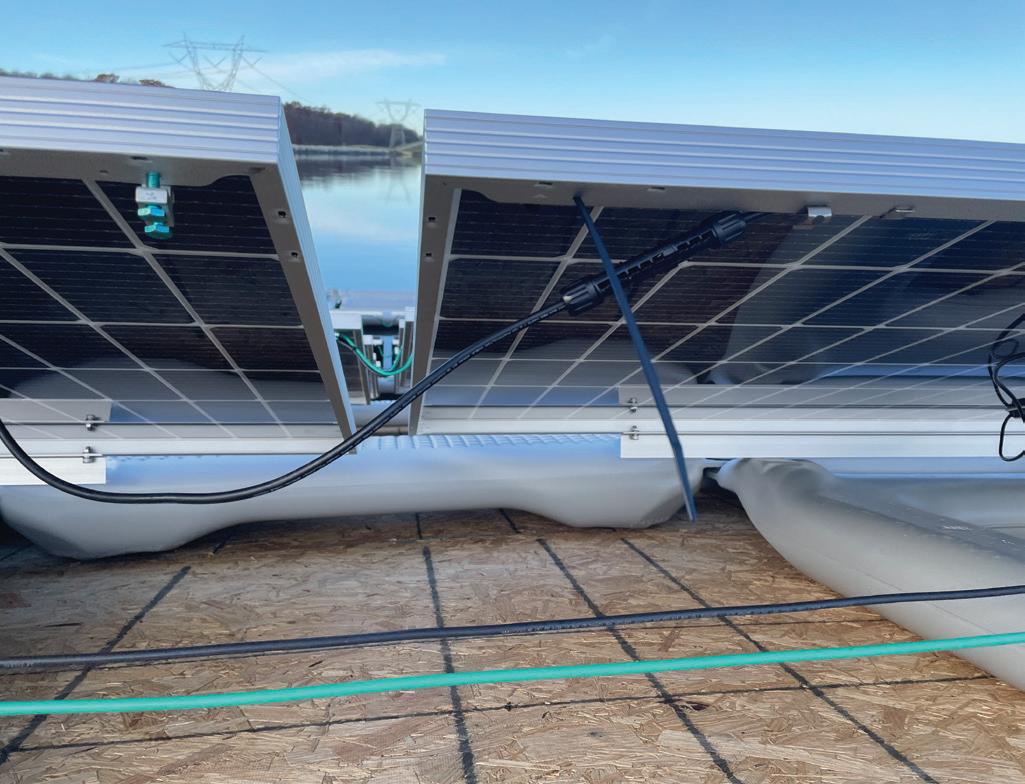
(concrete blocks). There are no chemicals used in the FPV system, nor are there any chemicals used in the cleaning process. The system comes with a data monitoring system built into the FPV, which is programmed to alarm if the system experiences any operational issues.
Fully functional, the FPV is a 1.2-megawatt installation that will cover nearly 3 acres on Upground Reservoir #4, providing an annual energy production of 1.6 gigawatt hours. The FPV is expected to provide about half of the energy needs of the Olentangy WTP, offsetting nearly 50% of Del-Co’s electricity consumption, resulting in substantial cost savings.
As installation began, Gary Easton of ARP noted that “we’re actually building the whole thing on the ground – nearly 2,600 solar panels being stitched together – then pushing it out onto the reservoir as we go”. Gary adds that “ARP is very proud to be a part of this effort because there was a time when everybody rolled their eyes at this type of project”. However, there can be a considerable decrease in energy costs, as Gary points out that “over the 25-year lifespan, Del-Co expects to save $1,000,000”.
Looking to the future, Del-Co hopes to expand upon this innovative project. Realizing the benefits of renewable energy, and considering the existing footprint, there is plenty of room for possible expansion. In total, Del-Co’s six upground reservoirs have a combined surface area of nearly 286 acres, providing ample space to install additional FPVs, while not losing any of the premium land in Delaware County. “The capability of putting a solar panel out on the reservoir and it producing energy for a guarantee of 25 years is pretty astounding” said Rich Stokey of MSI Utilities. Another partner, Stetson Tchividjian of D3Energy, is excited about the possibilities, noting that “the collaboration on this pioneering initiative and introduction of cutting-edge technology to Ohio is exciting” and that “Del-Co Water’s partnership with D3Energy for Ohio’s first floating solar array showcases their commitment to sustainability”. As demonstrated by this project as well as other initiatives, Del-Co continually strives to become a more responsible steward of the environment, while remaining dedicated to serving its

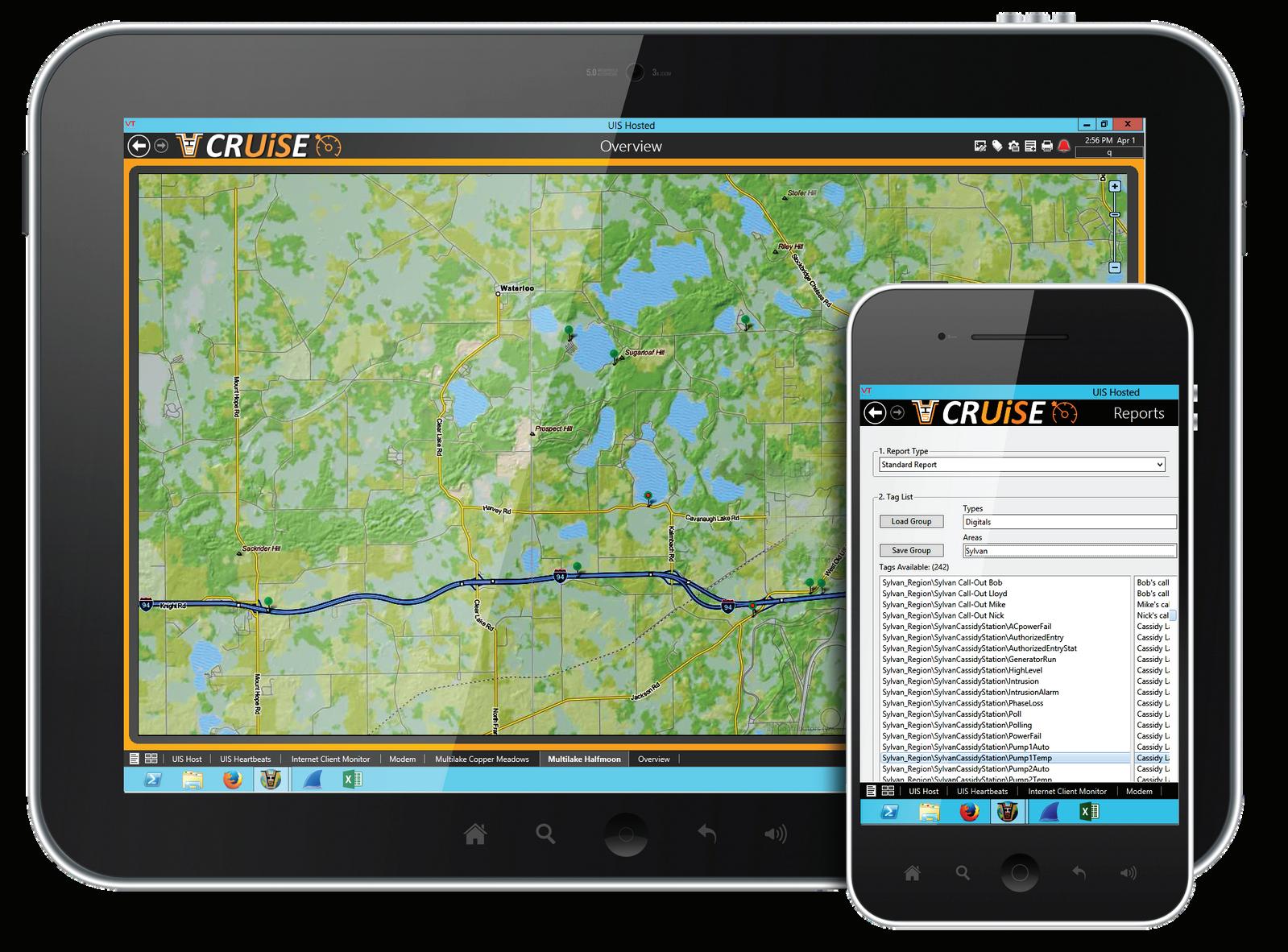




My current career is…
The Water Maintenance Coordinator for the City of Columbus Department of Water.
In my role, I oversee the SCADA Monitoring Operations of the Distribution System, and Building Maintenance functions of the department. I oversee a diverse workforce that maintains very high standards in our service to the community by providing uninterrupted water supply to the city.
My COC-DOW Opportunity happened…
I originally spent 23 years at Montgomery County Environmental Services in a variety of roles that ranged from a water meter reader (when we used books to write down our numbers), to a Water/Sewer Maintenance Worker, to a Water/Sewer Crew Leader, and eventually to a Water/Sewer Supervisor. In that role, I decided to focus my efforts on the Water Distribution side of the industry and was put in charge of our SCADA Supply group, where I served in that capacity until 2021. At that point, I saw an opportunity to advance my career to the City of Columbus when a position opened up as a Water Distribution Operator 2 in our Operations Control Center. At the Columbus Division of Water, we maintain and service 28 booster stations, 38 water tanks, and 40 plus Pressure Relief Valves in our system, while making sure these assets perform as designed.
At the end of 2022 I was given the opportunity to serve as the Interim Water Maintenance Coordinator for our Operations Control Center, and was officially given the job in March of 2023. In working diligently with my co-workers over this past year, I found that along with great team work, a desire to stay open to new ideas, and innovation, we all play a part in accomplishing this necessary work.


In early 2023 I saw a request in our ‘H20 in the Know’ newsletter asking for any volunteers to join our OAWWA DEI Committee.
I then met with one of the members, Stacia Eckenwiler, and she gave me a brief overview of what to expect, and what the group wants to accomplish. There was no pressure, and she told me, what you put into it, is what you’ll get out of it. I signed up immediately.
In the summer of 2023, I had the privilege of attending my first International AWWA ACE Conference in Toronto, representing our own DEI Committee for the Ohio Section of the AWWA. There I met many water professionals from all backgrounds, all walks of life, with interests that pointed to one goal: Providing fresh, sustainable water to all communities. It was eye-opening to see that, even today, there are many individuals that still don’t have access to fresh, potable water. I observed that while we have a long way to go, as new challenges arise, new opportunities do too.
In AWWA’s State of the Water Industry 2022, aging workforce and anticipated retirements, followed by talent attraction and retention, were ranked as the fourth and eleventh most pressing issues facing the water sector in 2022. In the water industry, workers tend to be older, and lack gender and racial diversity in certain occupations, which points to the need for younger and more diverse talent.
In the water industry, workers tend to be older, and lack gender and racial diversity in certain occupations, which points to the need for younger and more diverse talent.
In AWWA’s 2050 initiative, social and demographic drivers were listed among the important forces impacting the future of water, tying together public interest and concern about water quality and equity. Within the water sector, there is a tremendous opportunity to link business strategies to diverse ideas and perspectives from across our organizations, and communities served.
As an industry, we must stay focused on making that happen. We continue to do this through many programs, initiatives, and just hard work.
I saw a statement from a contributor in our DEI Newsletter about her journey in D & I, and she said that her mentor once told her “If we both always agree, then one of us is not needed.” I sincerely believe that is the foundation of what makes a
diverse workforce so necessary. There is nothing wrong with constructive disagreements because having different perspectives on the same topic can be quite productive, as long as that common goal is reached. We have a workforce that is ever fluid and evolving, and we must evolve with it.
I try to lead by example, and always stay open to different opinions, ideas, and perspectives. Teamwork requires your team, and they may have different solutions to problems that arise. If you don’t give your team a voice, you will find that your options and solutions will slowly disappear, and just stay as unresolved complications.
I feel I have just begun my DEI journey and look forward to collaborating with a network of professionals that see the value in promoting this positive initiative.
Our concern for the environment is more than just talk

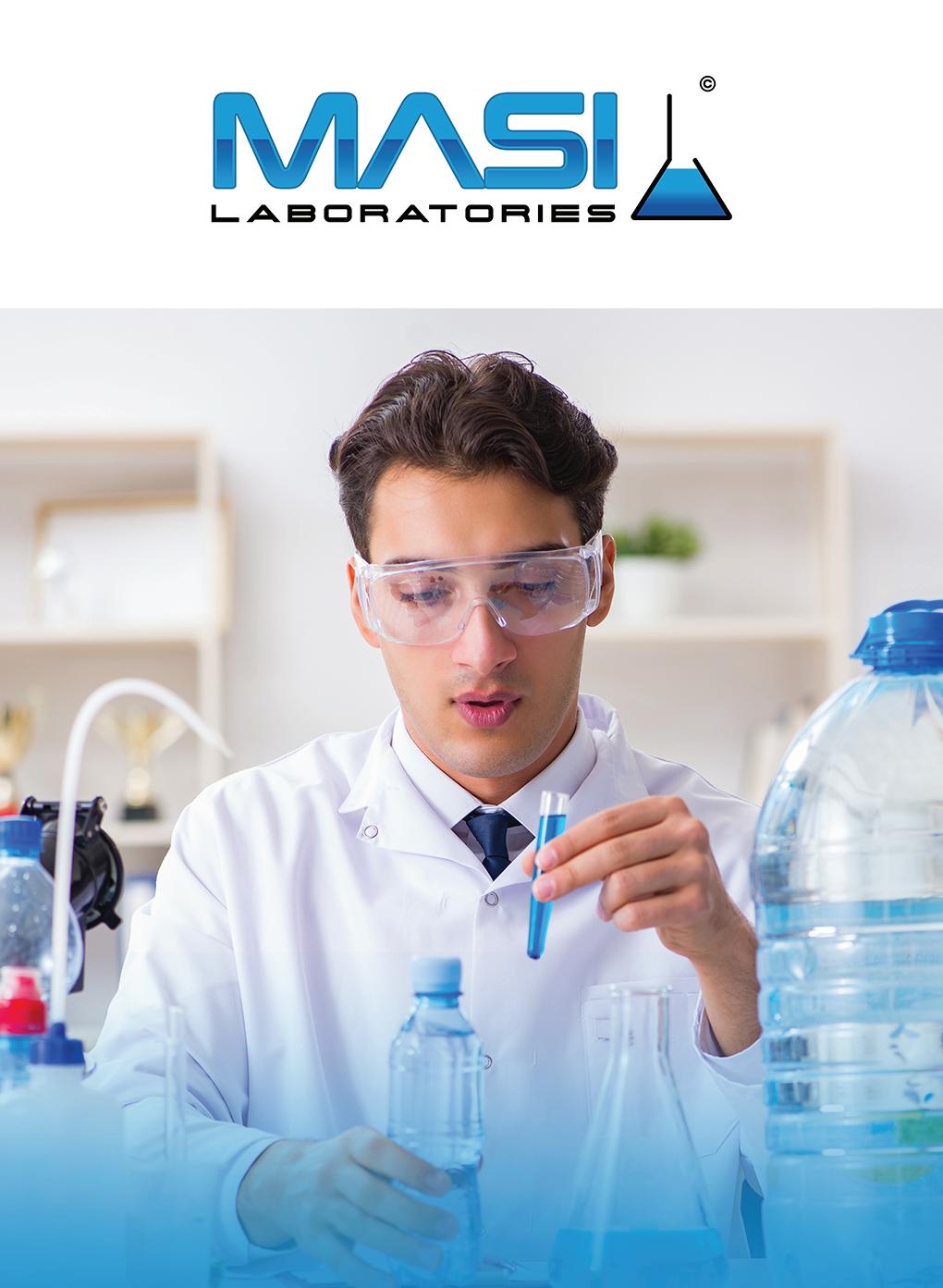

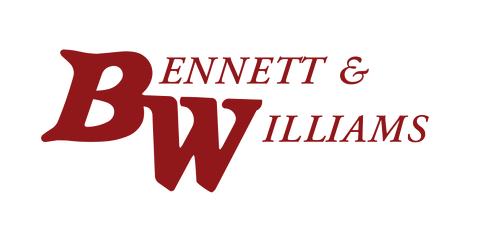


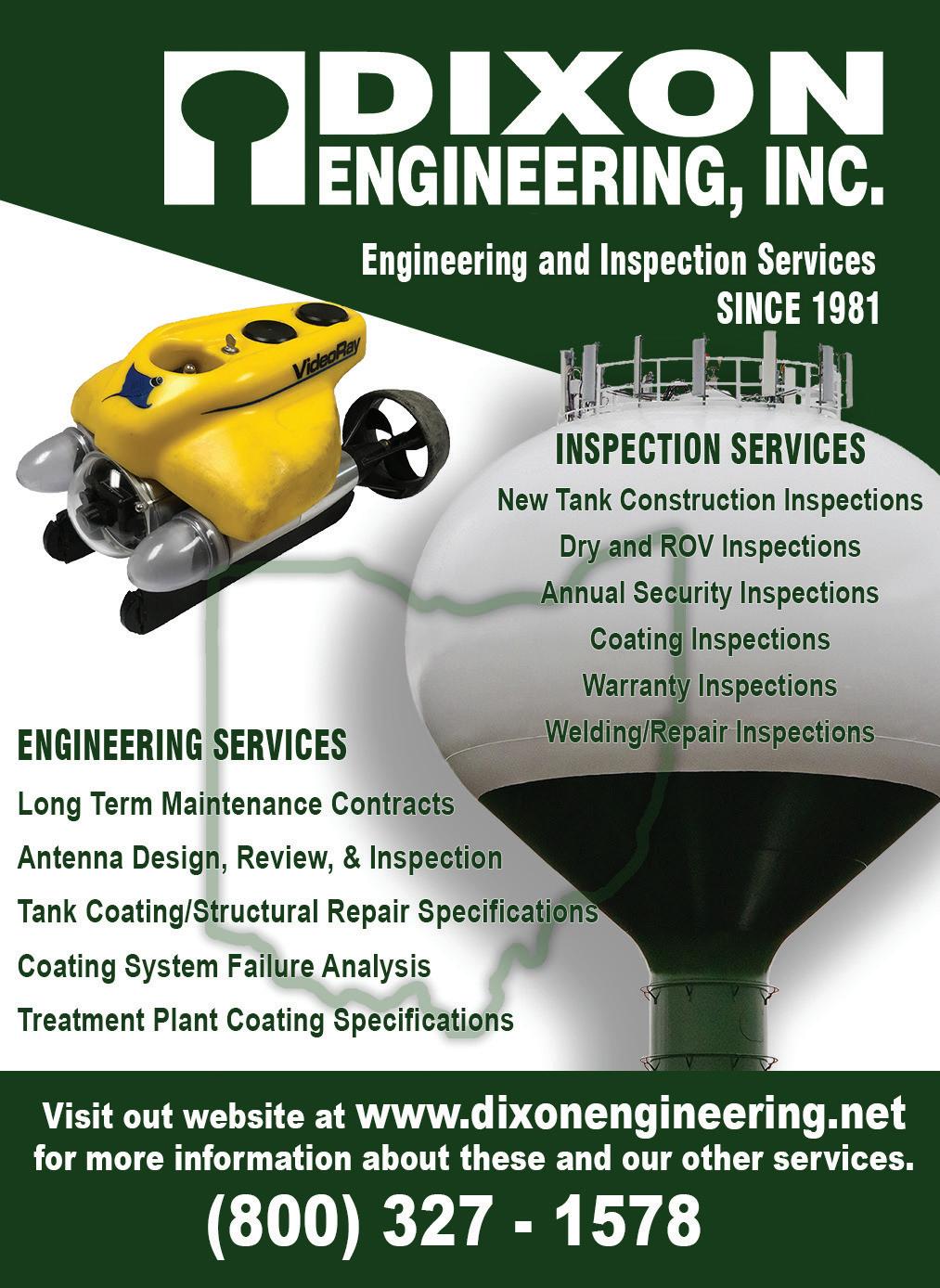



At the inception of the One Water collaboration between Ohio AWWA and Ohio WEA, an opportunity was presented to unite women across the water and wastewater industries. Broadly speaking, women’s role in water is a crucial one – in many parts of the world women bear the brunt of collecting water, as well as responsibility for household hygiene and sanitation needs. Paradoxically, women are often absent in key positions throughout water utility management and infrastructure roles in the United States. And no one recognizes this more than the women that have built their careers in the water and wastewater professions.
This reality was the premise for the formation of Ohio’s Women in Water Networking Group. This group was created in order to connect, support and empower women in the water profession by forming a strong network between one another. The group got its start by hosting its inaugural event at the 2018 One Water conference in Columbus, a ‘speed-networking’ event in which women in the industry were randomly matched with one another for a few minutes at a time to connect. With over 100 women attending, the energy was invigorating, and the desire for such a group was immediately confirmed.
One certainty remains true as we continue to have the conversation about bringing more women in to this industry – women remain an underutilized resource when it comes to talent in the water industry. Although we make up half the world’s population, research has shown that we make up only 18% of the water utility workforce (Women in Water Utilities: Breaking Barriers, World Bank, Washington, DC. 2019). Most recently, at the 2023 One Water Conference, a panel was convened of various women in leadership roles outside of the water industry, in order to bring their perspectives on barriers around recruiting women into the workforce. We heard from local Columbus leaders from the Columbus
Women’s Commission, Women for Economic and Leadership Development, and the Girl Scouts of Ohio’s Heartland. Sharing experiences and ideas across multiple industries and work environments is just another step toward increasing opportunities and exposure for women in our industry.
Despite what are considered low numbers of female representation in the industry, there is some evidence that the numbers are increasing, however it is not across the board. While numbers are increasing in technical and management roles, there is still a lack of women in operation, maintenance, and other skilled positions. These low numbers are often misunderstood, and thought to occur because women are not focused on the field of water as a career opportunity, resulting in low attraction rates. While this is part of the reason, there are barriers through other routes: recruitment, retention and advancement. Entrenched social norms, workplace bias and lack of work-life balance aren’t just buzz terms – they are real conditions that take major efforts at all levels, and by all people, to change.
These are the reasons our group exists. We will continue to have discussions about how we can improve female representation in this industry. We are working together with representatives in both OAWWA and OWEA, and both of their Diversity and Inclusion-focused groups, to cross-promote and collaborate. We aspire to get a mentorship program in motion for 2024. And we will continue to foster ideas and conversations by way of organized events at the annual conference – and everyone is welcome to attend. After all, it takes everyone to make change.
If you are interested in learning more, or would like to be on our communication list, you can reach out to Stacia Eckenwiler at skeckenwiler@columbus.gov and Stephanie Johnson at stephanie.johnson@hdrinc.com. You can also join our LinkedIn page at www.linkedin.com/company/women-in-water-ohio.

Waterfront is made possible by the companies below who convey their important messages on our pages. We thank them for their support of OAWWA and its publication and encourage you to contact them when making your purchasing decisions. To make it easier to contact these companies, we have included the page number of their advertisement, their phone number, and, where applicable, their website.




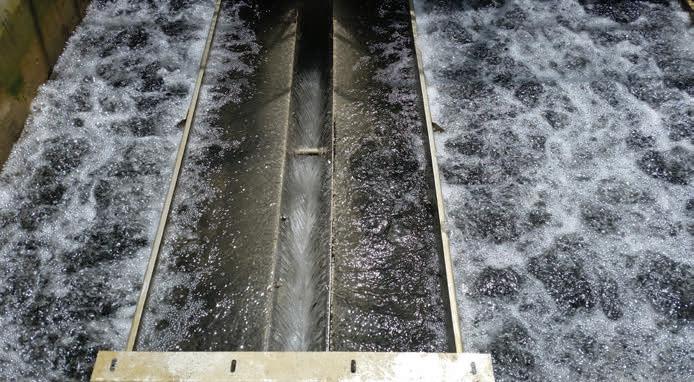


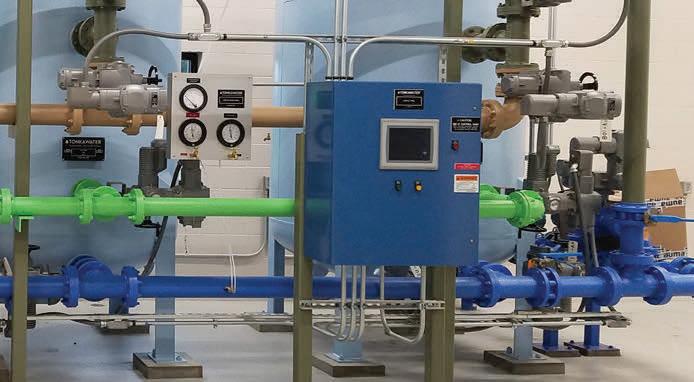


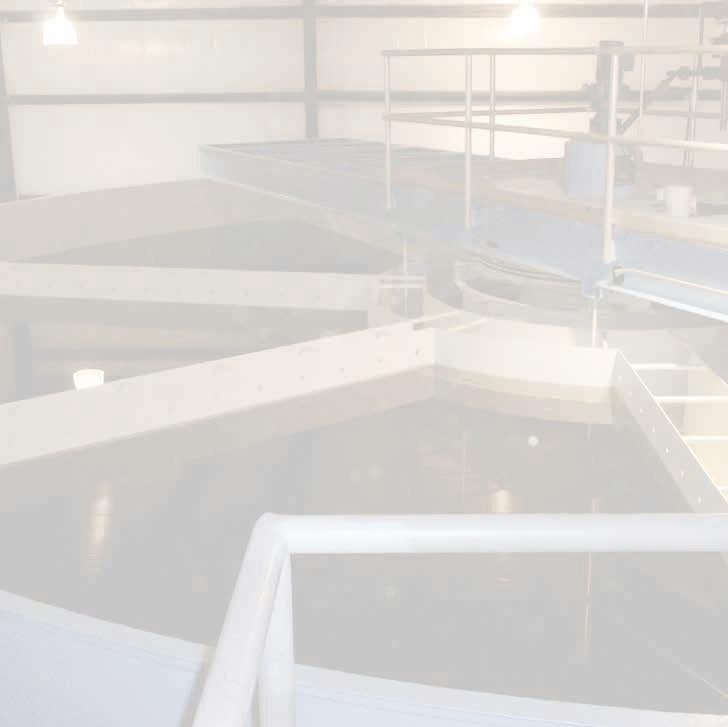



Tonka Water, a Kurita brand, has been dedicated to meeting the potable water needs of public water systems across North America since 1956. As part of Kurita America, Tonka Water remains a trusted brand in municipal water treatment with over 2,700 installations. We are dedicated to understanding your specific needs to customize designs that deliver the optimal solution for each application.
Our aftermarket services team is a trusted resource to help ensure your system operates at peak performance. We offer the products and services you need to maintain your system and extend equipment life to get the most out of your investment. This includes hard-to-find parts, troubleshooting assistance, ancillary equipment, and refurbishment packages. Our experienced field service professionals offer on-site support based on your current need or as part of an extended service contract. Contact our aftermarket services team for the support you need. Our water treatment experts are ready to help.
a Kurita brand
